
By David Carr |


By David Carr |
How many more hits to its reputation can Boeing absorb? At press time, it was too early to say who is directly responsible for an Alaska Airlines 737 Max 9 emergency door plug popping out from the fuselage at 16,000 feet. But a consensus has formed. Boeing has a quality control problem.
“[T]he dramatic nature of the flaw will have the effect of once again calling Boeing’s product governance into question by customers, regulators and the flying public,” Nicolas Owens, an analyst with Chicagobased Morningstar Inc. told Reuters news agency.
The Alaska Airlines setback came as confidence in the Max program was gradually being restored. Boeing sold 883 Max airplanes last year, including an order from Lufthansa, the launch customer for the original 737 in 1967, and who hasn’t operated the type since 2016. Dave Calhoun, Boeing’s chief executive since 2020, has worked to rebuild Boeing’s reputation for reliability and engineering excellence, while so-called ‘quality escapes’ dog the effort.
Boeing delivered 528 airplanes last year. An improvement over 2022, but short of its target. Sloppy production over vertical stabilizer fittings and mis-drilled holes in aft-pressure bulkheads supplied by Wichita-based Spirit AeroSystems disrupted deliveries of some Max airplanes, leaving costly inventory sitting on the ground while Boeing repairs and inspects the airplanes in question.
Spirit also supplies the fuselage and door plugs for the Max 9, including the Alaska Airlines ill-fated aircraft that had been in service for about eight weeks. Since the airplane was grounded, United and Alaska Airlines, the two largest operators of the type, have found loose bolts related to the installation of door plugs in a number of Max 9s. Spirit replaced its chief executive with a former Boeing executive and pentagon official in October.
Boeing’s stock plunged almost 10 per cent after the Alaska Airlines incident. It will rebound, just as it did after the 737 Max was grounded in March 2019 and before COVID hit. But the stock has never regained its
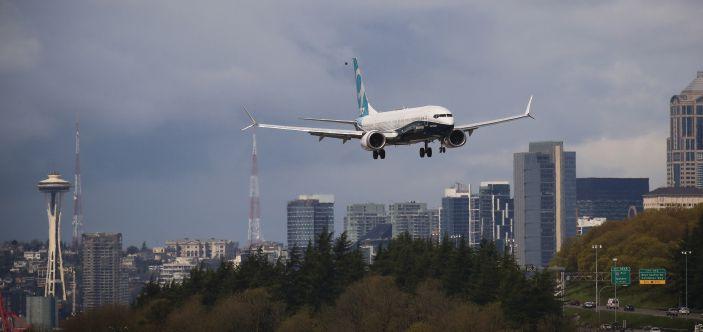
The FAA is exploring the use of a third party to oversee Boeing’s inspections and quality systems.
pre-grounding value while the gap between Boeing and Airbus for orders widens.
It is estimated that Boeing has paid out approximately US$20 billion in fines, penalties to airlines, and compensation for the families of the victims of the Lion Air and Ethiopian Airlines Max 8 tragedies. The overall bill for 737 liabilities is about to grow higher and faster. But the hit to Boeing runs deeper than financial. Boeing and Spirit AeroSystems are under intense scrutiny. At the time of writing, the Max 9 grounding had entered its third week and the Federal Aviation Administration (FAA) has cast a wider net by recommending operators of the 737 900ER “visibly inspect” their fleets. The 737 900ER, which entered service in 2016, shares a door plug design with the newer model.
An initial batch of 40 fully inspected Max 9s still needs to be re-inspected before the FAA will review the results. “The safety of the flying public, not speed, will determine the timeline for returning the Boeing 737 9 Max to service,” the administration said in an earlier statement. The FAA is also considering third-party oversight of Boeing’s production lines, and has launched an investigation into what went wrong. Alaska Airlines has announced a “thorough review” of Boeing’s quality control systems, and
European low-cost operator Ryanair has doubled its oversight of Boeing’s production.
For its part, a shaken Boeing has admitted its “mistake”. To help right the ship, the company has appointed a retired U.S. Navy admiral to lead an in-depth assessment of its commercial quality management system.
Boeing was always an engineer’s company that shaped the great leaps in modern day air transport. The company brought to market four groundbreaking jets between 1958 and 1970 alone.
When Airbus bet big with the A380, Boeing changed the game again with the 787. Boeing may not have lost its way completely, but it clearly has lost its ambition to lead. Shortcutting a new generation airplane out of a 40-year-old airframe was one squeeze too many. The company’s next new airplane will likely compete in the single-aisle category, but is not expected to be launched before 2030.
There is still confidence in the Boeing product line, including a strong rebound in wide-body sales. Still, the company has little margin for error, especially when it comes to the Max. According to the U.K.’s Telegraph newspaper, Calhoun told staff at a meeting after the grounding that Boeing would “ensure every next airplane that moves into the sky is in fact safe.” That used to be a given. | W
David Carr is former editor of Wings and Helicopters magazines.


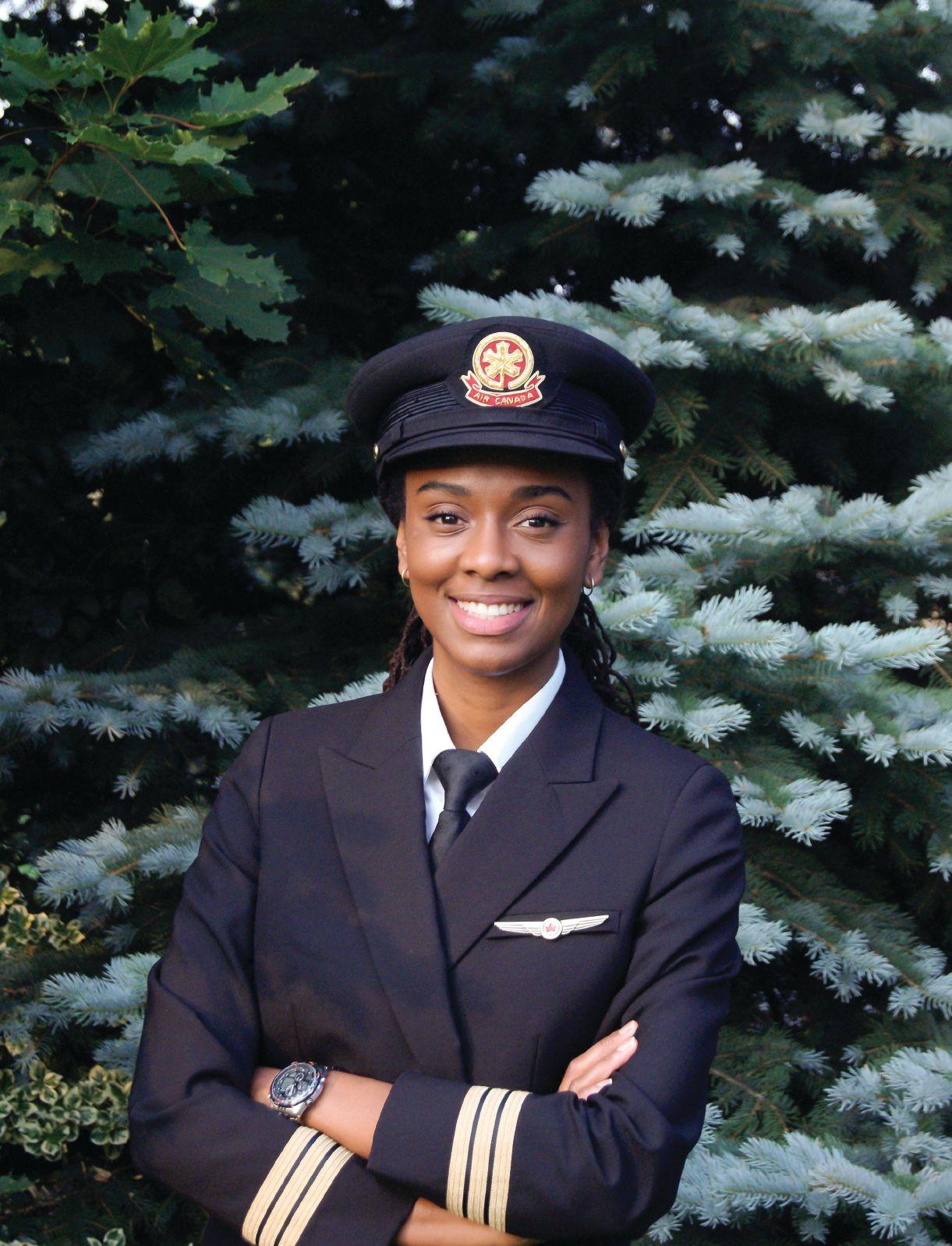
EDUCATIONAL AND TRAINING RESOURCES FOR CANADIAN FIXED AND ROTARY WING INDUSTRIES
FIXED- AND ROTARY-WING
Alkan Air Flight Academy | Whitehorse
Alkan Air is partnered with Yukon College to offer one year or 30 credits toward a two-year Aviation Management diploma. Alkan Air also provides its own training to earn a Private Pilot Licence (PPL) and Commercial Pilot Licence (CPL).
Canadian Flight Centre | Boundary Bay and Kamloops Canadian Flight Centre (CFC) opened in 1979 and operates at Pitt Meadows Airport and Kamloops Airport. CFC provides a Professional Pilot Program (certificate), Airline Pilot Program (diploma) and Flight Dispatcher Program (10-month certificate). The 10-month Professional Pilot Program focuses on PPL and CPL, as well as Multi-IFR Ratings with 200 hours of flight time. The 3-year Airline Pilot Program focuses on PPL, CPL, Multi-IFR, flight instructor, work experience, and ATPL with 1,500 hours of flight time.
Chinook Helicopters | Abbotsford
Chinook Helicopters began training in 1982 at the Abbotsford Airport, from where it continues to operate. The Abbotsford area is well suited for year-round helicopter training. Chinook utilizes the expansive Fraser Valley for all initial flight exercises, and the Coastal Mountain range for intermediate and advanced exercises.
Fort Langley Air | Pitt Meadows
As one of Canada’s oldest float operators, Fort Langley provides float training programs for novice and experienced pilots with a dedicated fleet of Cessna 180s. In addition to the basic seven-hour float rating, its 15-hour Seaplane Course is designed for private pilots aspiring to operate their own aircraft in a bush environment.
The 50-hour Career Bush Pilot Course is tailored for commercial pilots.
Ocean Air, operating from CAP5 adjacent to CYYJ, has specialized in seaplane training for both commercial and private licenses since 2002. Its experienced pilots help provide a range of programs based on hours, including 50-, 25- and 15-hour programs, or as requested.
Okanagan Mountain Helicopters | Kelowna
Okanagan Mountain Helicopters started as a flight training school in 2003. Its facility at Kelowna International Airport introduces students to controlled radio procedures, multiple training locations for confined areas and mountain flying within a control zone.
Pacific Flying Club | Boundary Bay
Pacific Flying Club (PFC), located at Boundary Bay Airport, opened its doors in 1965. The school offers a range of flight training programs with a fleet of 29 aircraft and three simulators, including the Alsim ALX. PFC has been a partner with BCIT since 2002 delivering the flight training component of its Airline and Flight Operations Program (diploma).
Southern Interior Flight Centre | Kelowna
Southern Interior Flight Centre is located at Kelowna International Airport, allowing for exposure to the controlled and uncontrolled environments a pilot might encounter. It provides a range of programs, including a Commercial Aviation Diploma Program, Recreational Pilot Permit (RPP), PPL, CPL, as well as Night, Instrument and MultiEngine Ratings.
Pacific Seaplanes | Kamloops
Pacific Seaplanes specializes in preparing pilots for professional seaplane flying as
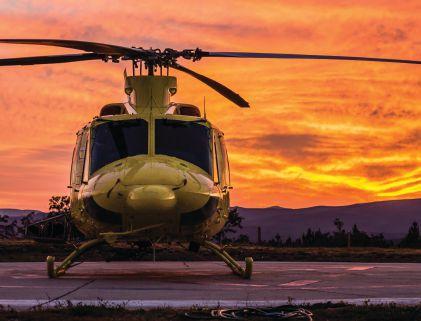
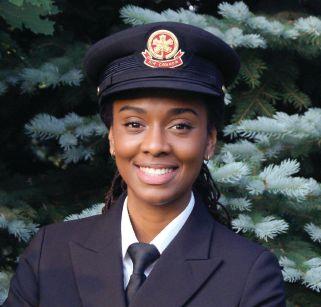
Zoey Williams, age 26, was named as one of Wings Top 20 Under 40 recipients in 2023. She began flying at age 15 and spent her early years in aviation in a range of roles from fueling aircraft to flight dispatch and flight instruction. Williams attained an Advanced Diploma in Aviation Flight Management, a Bachelors in Aeronautics and Aviation Management, and a Masters in Business Administration specializing in Aviation and International Business. Earning her ATPL at age 21, Williams flew with Wasaya Airways on the Beechcraft 1900D before joining Sky Regional out of Mississauga as a First Officer on the Embraer 175. In 2020, Williams was hired at Air Transat to earn her type rating on the A321. After the pandemic, Williams returned to the skies as a First Officer with Flair Airlines on the 737 before returning to Air Transat on the A321. In 2022, She was hired as the first black female pilot at Air Canada and in early 2023 became a First Officer on the Boeing 777. Williams continues to build her role as an advocate for diversity and inclusion as a board member of the Urban Pilots Network.
well as private operation. New for 2024, Pacific Seaplanes is offering training from the BC Interior with increased emphasis on mountain flying, based at Kamloops Airport. Courses range from basic seaplane ratings through hour building Mentorship Programs.
Sealand Flight | Campbell River
Sealand Flight established in 2014 is based in Campbell River and operates sub-base flying schools in Courtenay Airpark, Qualicum Beach Airport, Powell River Airport and Port Hardy Airport. Sealand focuses on what it describes as community based pilot training in Cessna 172s and has acquired a new Pipistrel Velis Electro. Sealand provides RPP, PPL and CPL, as well as Instructor, Night and Seaplane Ratings, and Electric Aircraft Differences Training.
Victoria Flying Club | Sidney Victoria Flying Club (VFC) has been training pilots since 1946. It develops customized training programs and operates a fleet of 10 Cessna 172SPs, a Piper Seminole and two recreational rental aircraft (C172N and PA-28R-200) for fun and economical CPL time building. It also offers training and private rental of a Redbird FMX simulator.
Calgary Flying Club | Calgary
The Calgary Flying Club (CFC), founded in 1927, is based at Springbank Airport near the Rocky Mountains. CFC explains it holds the largest flight school fleet in Alberta, equipped with modern avionics, highlighting its dedication to offering diverse training for everything from PPL to IFR and Instructor Ratings, as well as Multi-Engine Ratings. CFC holds a staff of 25 flight instructors.
Centennial Flight Centre | Edmonton Centennial Flight Centre, in operation since 1967, is located at Villeneuve Airport. It provides training for RPP, PPL, CPL, Multi-Engine and Instrument Ratings.
Edmonton Flying Club | Edmonton Edmonton Flying Club (EFC), home of the Edmonton Flight College, operates out of Parkland Airport. Founded in 1927, EFC is a member-owned organization with a diverse fleet of aircraft and providing flight training at all levels from recreational pilots to Commercial Multi-Instrument rated, career-ready pilots.
Mountain View Helicopters | Springbank
Mountain View Helicopters (MVH) has trained pilots for commercial or private helicopter licences from its Springbank
Airport location since 1995. Located near Calgary International, MVH is able to provide flying weather found on the prairies and also proximity to mountains.
Super T Aviation | Medicine Hat
Serving southern Alberta since 2008, Super T Aviation is a family-owned operation and part of the Bar XH Sales group of companies. This provides the company with a range of industry experience in training, medevac service, charter, and scheduled service to draw its knowledge from.
Mitchinson Flight Centre | Saskatoon
Saskatchewan’s largest flight school, offering Private, Commercial, Multi-Engine and Instrument Ratings, Mitchinson Flight Centre has been training pilots since 1946. Its Integrated Airline Transport Pilot License (IATPL) program and Professional Pilot program, in addition to partnering with Saskatchewan Polytechnic’s Commercial Pilot diploma program, allows Mitchinson to offer flexible career path options. Flight training is conducted at and around Saskatoon International Airport. Mitchinson maintains a fleet of 14 aircraft.
Brandon Flying Club | Brandon
Brandon Flying Club’s Flight Academy has served the region since 1936. Located at Brandon Municipal Airport, it offers ground school, RPP, PPL and CPL courses.
Harv’s Air | Steinbach, St. Andrews
Harv’s Air is a family owned and operated air service with locations near Steinbach and St. Andrews, both in the Winnipeg area. Its operation has provided flight training, air taxi, and aircraft maintenance services since 1973. Having two locations allows Harv’s Air to offer a range of resources for flight training, including examiners, instructors and aircraft maintenance.
PilotTraining | Steinbach
Founded in 1999, PilotTraining.ca provides online instruction for aviation written examinations. Courses can be used as credit toward the Transport Canada ground-school requirement. The operation is approved to conduct ground schools with Harv’s Air, its parent company.
Aerocourse | Oakville
AeroCourse provides ground school training, including IFR and ATPL ground
school seminars offered both virtually and in-person in centres across Canada. They are designed to lead students to be successful on their Transport Canada exams and to become better IFR and ATPL airline pilots. AeroCourse works with several flight schools and offers a six- to seven-month Advanced Multi-crew Training Program with over 270 hours of training covering requirements for airline transition.
Brampton Flight Centre | Brampton
Brampton Flight Centre and College (BFC), in addition to non-structured (certificate) programs, offers two professional flight training programs (diploma) open to those with no prior training. Its 20-month IATPL program provides the qualifications for students to work for airlines directly upon graduation. IATPL students achieve their PPL and CPL with Night, Multi-Engine and Instrument Ratings, and will have completed the two written exams necessary to become an airline pilot (SAMRA & SARON). BFC also offers the 14-month Professional Pilot Training Program (college).
Brantford Flight Centre | Brantford Since 1929 the Brantford Flying Club has been providing flight training at CYFD. As one of the oldest flight training schools in Canada, Brantford Flying Club has helped thousands of students get their RPP, PPL and CPL. Brantford Flying Club’s Integrated CPL program is currently on hold with Group 3 IFR set to return soon.
Canadian Flight Academy | Oshawa Toronto Airways, through its Canadian Flight Academy (CFA) subsidiary, provides an IAPTL curriculum, which also inlcudes support for new flight instructors. Based at Oshawa Executive Airport, CFA provides opportunities via various flight colleges.
Cygnet Aviation Academy | Kingston
Chorus Aviation in mid 2023 launched Cygnet Aviation Academy, based in Kingston, Ontario, describing it as a first-of-its-kind pilot academy in Canada in terms of flight training with direct access to career opportunities. Cygnet, in collaboration with CAE, is designed to provide an all-in-one, 20-month program on modern aircraft, flight training devices, and full flight simulators, allowing cadets to earn an IATPL and acquire an airline specific type rating.
Diamond Flight Centre | London
Diamond Flight Centre has been training pilots at the London International Airport since 2009 and, as a registered Private Career College, holds a full-time staff of certified flight instructors. The school also holds a fleet of advanced training aircraft


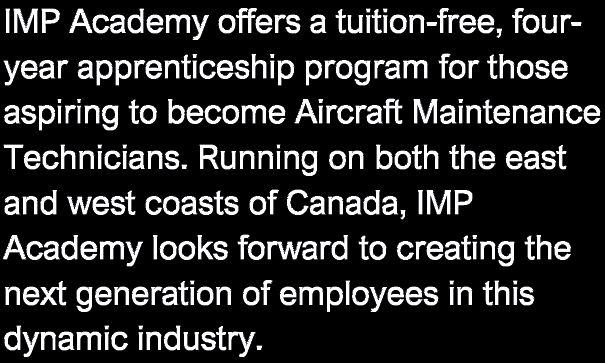
For more information and to apply:







manufactured in London, ON, by Diamond Aircraft, which develops modern glass-cockpit aircraft.
Durham Flight Centre, based at the Oshawa Executive Airport, offers training for all phases of recreational and professional licenses as a Transport Canada registered Flight Training Unit and a Private Career College. It has been offering pilot training since 1997.
Genesis Flight College is a registered Private Career College providing a one-year commercial pilot diploma program. Located at Collingwood Regional Airport, students can enjoy the surrounding landscape and many activities available in the region. One of the key advantages of the Genesis Flight College is that 100 per cent of the flying is in advanced aircraft with glass cockpits.
Great Lakes Helicopter is a Private Career College that specializes in training, utility, spray, charter, tourism, and drone operations. Based at Waterloo International Airport, Great Lakes offers flight training year-round and focuses on commercial and private licensing, IFR, night ratings, and foreign license conversions. A full-time commercial licence and certificate program is offered through partnership with Conestoga College.
Journey Air Pilot Training is a Private Career College and focuses on providing hands-on theory and practical education. It operates a fleet of composite Diamond aircraft with advanced avionics. Journey also provides flight training devices, including the Redbird FMX 1000 or and an Alsim AL42, manufactured to replicate the
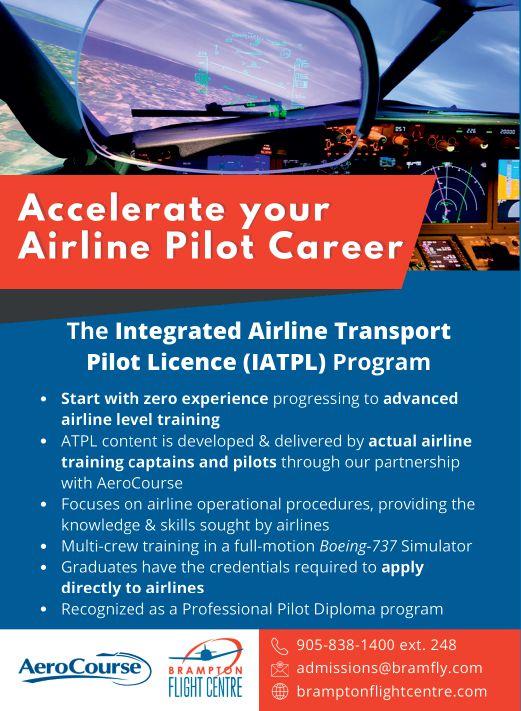
Diamond DA42. Located at Windsor International Airport, Journey provides PPL and CPL, as well as Multi-Engine, Instrument and Night Ratings.
St. Thomas Flight Centre | St. Thomas
Established in 1996, the St. Thomas Flight Centre offers flight training from RPP through to CPL, as well as Multi-Engine amd Instrument Ratings. The Private Career College operates out of St. Thomas Airport in an uncongested flight environment.
Spectrum Airways | Burlington
Spectrum Airways has been training pilots for more than 40 years. The training facility is situated at Burlington Executive Airport, one of the busiest airparks in Ontario. A Private Career College, Spectrum’s training programs include PPL and CPL, as well as Night, Multi-Engine, Instrument and Instructor Ratings.
Waterloo Wellington Flight Centre | Breslau
Waterloo Wellington Flight Centre (WWFC) is located at Waterloo International Airport, offering a range of training programs for fixed-wing aircraft, as well as Remotely Piloted Aircraft Systems. WWFC provides RPP, PPL, CPL and IATPL, as well as Multi-Engine, Instrument, Night and Instructor Ratings. WWFC partners with the University of Waterloo and Conestoga College.
Windsor Flying Club | Windsor
The Windsor Flying Club was incorporated in 1944 and has been in continuous operation since. The club holds approximately 280 members and is also home to the Canadian Aviation Museum.
Collège Air Richelieu | Saint-Hubert
Air Richelieu is an accredited flight training centre located at StHubert Airport, approximately 20 minutes from Montreal, and controlled by the Montreal Flying Club. Air Richelieu is an ATO training centre and offers a college diploma with integrated ATPL.
Debert Flight Centre | Truro
Debert Flight Centre is part of the Truro Flying Club and operates out of Debert Airport, which has been home to the club since 1972. Debert Airport is an uncontrolled air space located less than five minutes flight time from training areas.
MFC Training | Dieppe and Lincoln
MFC Training was founded in 1929 and is now one of the largest and most experienced flight schools in Canada. MFC’s Aviation Career Pilot Programs provide all required flight hours and examinations to graduate with a CPL, as well as Multi-Engine and Instrument Ratings. Its programs allow future pilots to move through the modules in a condensed time frame and provide a quicker transition to becoming airline captains. The company offers a seasonal flight school at the Goose Bay Airport in Labrador.
Gander Flight Training | Gander
Gander Flight Training (GFT) has provided flight training since 1992. Located at Gander International Airport, GFT focuses on providing RPP, PPL and CPL, as well as with Multi-Engine, Instrument, Instructor and Night Ratings. | W
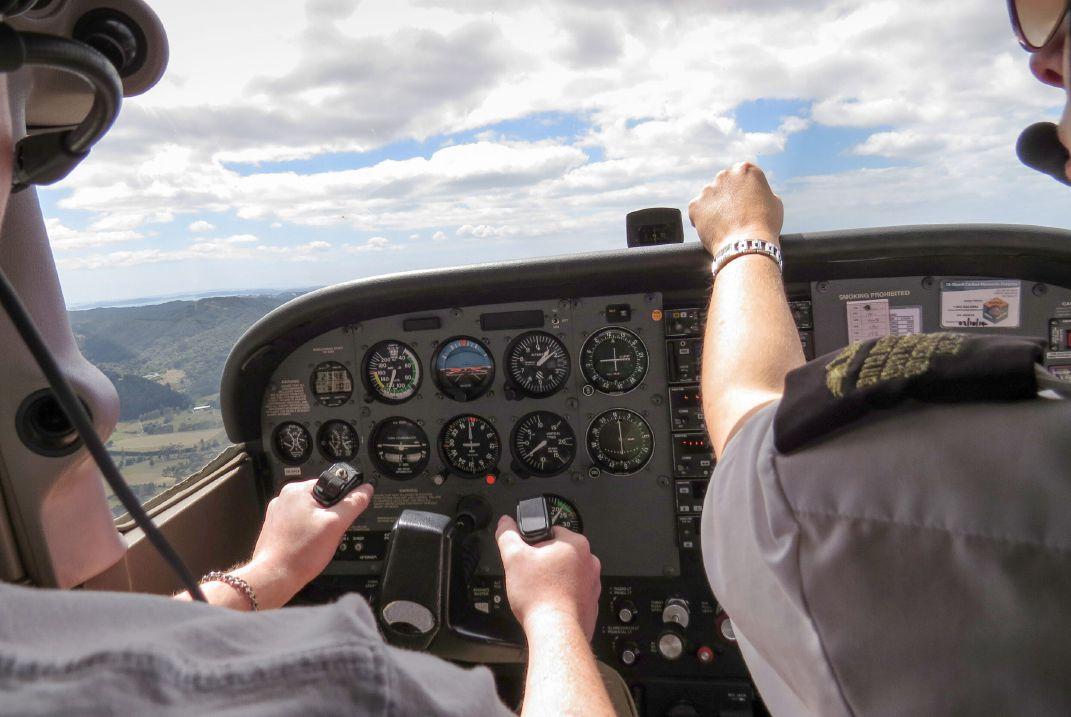
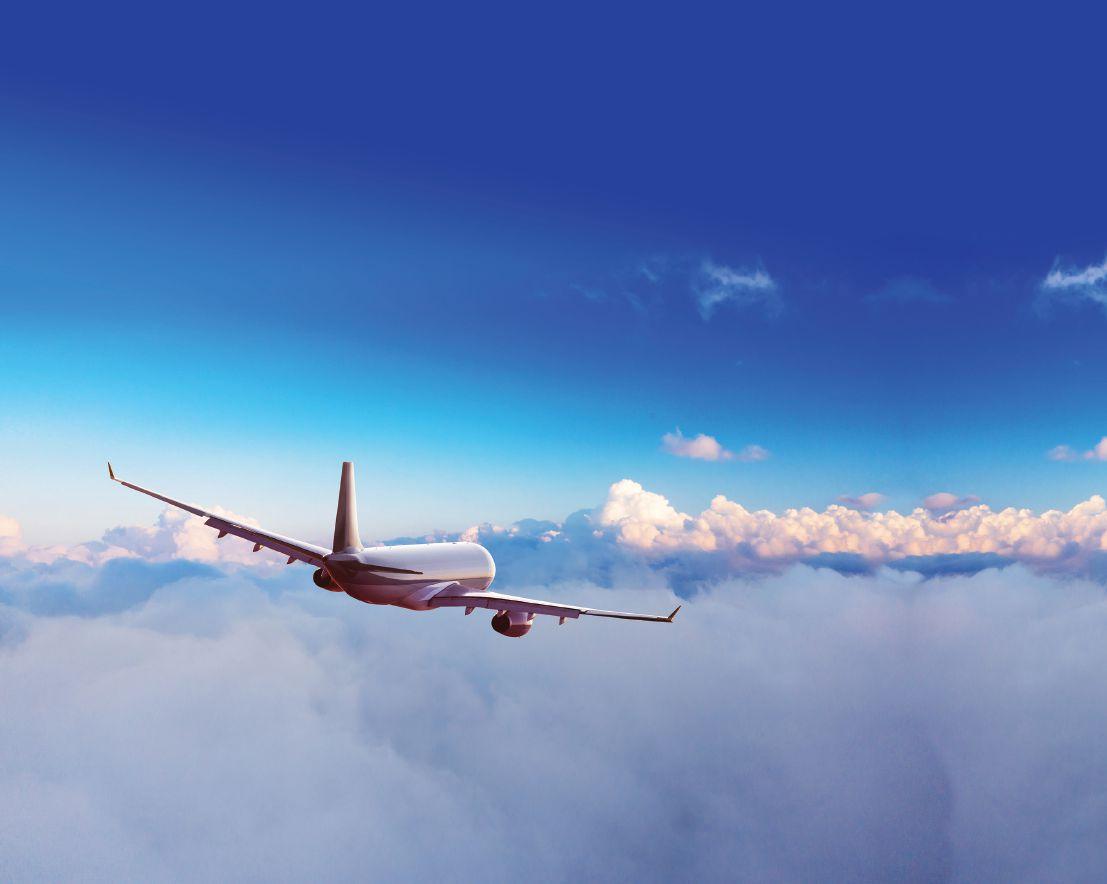


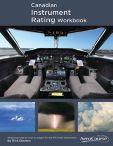
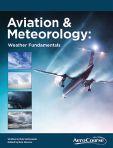


Yukon College | Whitehorse
The Aviation Management diploma program at Yukon College comprises a block transfer of pilot training credentials earned at Alkan Air (or other recognized flight schools) that equals one year or 30 credits and an additional 30 credits earned at Yukon. Students are expected to earn a Commercial Pilot License while concurrently earning academic credits. However, students may enter the program with some pilot training (a Private Pilot License, for example) or a completed commercial license. Students may complete the ground school and flight training component of the Aviation Management diploma in a flexible manner.
British Columbia Institute of Technology | Richmond and Delta British Columbia Institute of Technology’s (BCIT) School of Transportation provides students with skills to become pilots in its Airline and Flight Operations Commercial Pilot program. It combines flight training with industry related academic training at BCIT’s Aerospace Campus in Richmond. Flight training for fixed-wing aircraft is conducted at Pacific Flying Club’s flight school at Boundary Bay Airport in Delta. Rotary-wing flight training is provided by Chinook Helicopters in Abbotsford. During this 64-week program, students receive training required to qualify for a Private Pilot Licence (PPL), Commercial Pilot Licence (CPL), Multi-Engine Rating, Instrument Flight Rating, and a diploma. In addition, BCIT’s Aviation Management and Operations diploma program is designed to meet the human resource demands for airports. This 16-month
program also runs at the Aerospace Campus where students focus on both airport and airline regulations, processes and management practices, new technologies, and data analytics.
Douglas College | New Westminster Douglas College’s Associate of Arts Degree for Future Professional Pilots is a program for students who wish to continue to a career in the aviation industry. This program is jointly offered with Professional Flight Centre, located at Boundary Bay Airport in Delta. Douglas provides the academic instruction leading to the Associate of Arts Degree and Professional Flight Centre provides the ground and flying instruction with enough flight experience to obtain a Commercial Pilot License and Multi-Engine Instrument Rating. Associate degrees take two years to complete and concentrate on one area of study; often the goal is to transfer all 60 credits to university.
Okanagan College | Kelowna
The Commercial Aviation diploma program at Okanagan College consists of two distinct and separate areas of study: Flight training and business studies. The business portion is completed at Okanagan College and normally consists of two business courses per semester for a total of eight courses over two years. The flight training portion is done with Southern Interior Flight Centre at Kelowna Airport, consisting of theory, flight training and exams.
Red Deer Polytechnic | Red Deer Red Deer College’s (RDC) partnership with Sky Wings Aviation Academy combines a foundation in business with flight training. The 1-year Certificate program holds its business management courses at

the Donald School of Business. Ten Business Administration courses are required to complete the Business Certificate. Sky Wings is located in Penhold, Alberta, near Red Deer. Sky Wings states its students can expect a variety of flying conditions during training out of Red Deer Regional Airport. Sky Wings has provided flight training since 1982. Most RDC courses are university transferable.
Saskatchewan Polytechnic | Saskatoon
Saskatchewan Polytechnic’s Commercial Pilot program provides a strong foundation in the basic principles of aviation. Students study aviation-related topics such as the theory of flight, advanced aircraft systems and flight. The 19-month program leverages an Alsim flight sumulator. Flight training takes place at a student’s home flying school.
College | Ottawa
Algonquin College’s Aviation Management is a two-year diploma program designed to provide students with the knowledge and skills required to become a commercial pilot. Through a series of classroom courses and practical labs, students have the opportunity to complete the Transport Canada Commercial Pilot Licence written examination (CPAER) and practical flight test. Flight Training is a non-funded activity, but students can expect to amass up to 200 hours of flight experience at an Algonquin College approved flying partner.
College | North Bay
The partnership between Canadore and Helicopters Canada offers a unique blend







As one of Canada’s premier aviation schools, we offer state-of-the art facilities and innovative flight instruction methodology. Start your career with a competitive edge.
Available programs
• Aviation Operations
• Aviation Safety
• Flight Services
• Flight Services – Operations & Cabin Management
• Honours Bachelor of Aviation Technology
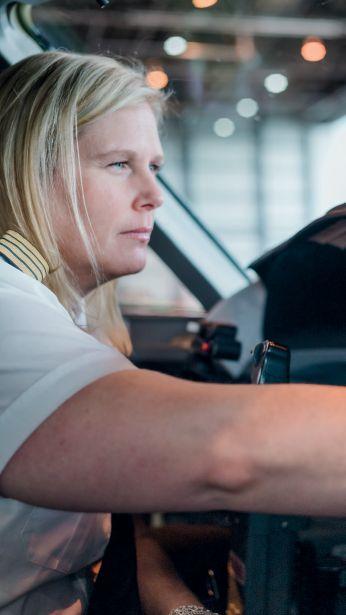
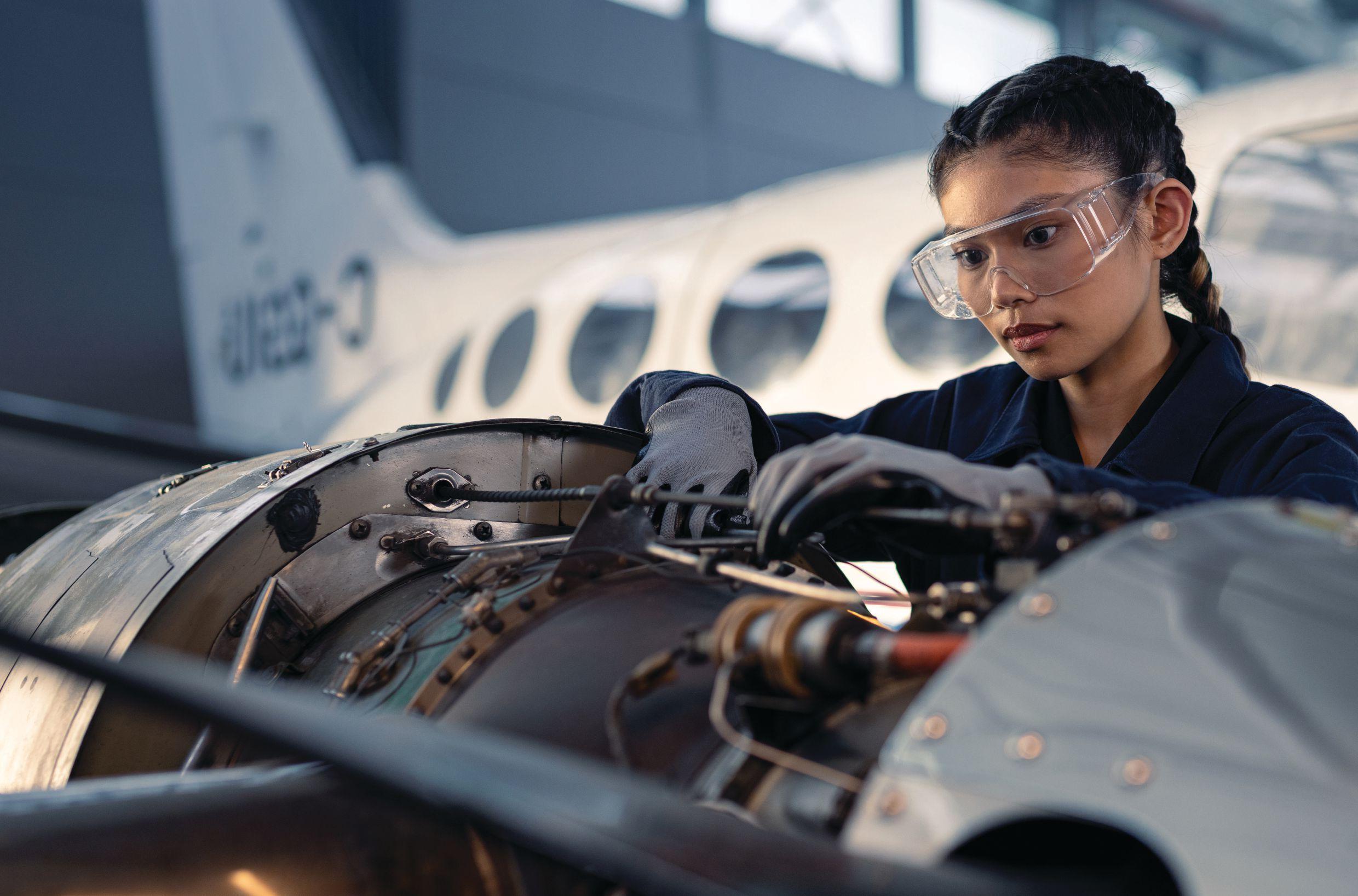

At the Bombardier Centre for Aerospace and Aviation at Downsview Campus, a dedicated training facility, focused courses, cutting-edge equipment, and professional instructors are mainstays. The result? Highly capable aerospace and aviation graduates who make an immediate impact — and keep your aircraft sky-high.
The hangar is the classroom for Centennial’s Aviation programs:
• Aerospace Manufacturing Engineering Technician
• Aircraft Maintenance – Aviation Technician
• Aircraft Maintenance and Management – Aviation Technology
• Airframe Assembly
• Avionics Maintenance – Aviation Technician
• Avionics Maintenance and Management – Aviation Technology
of academic, operational and hands-on rotary wing training. The college structured classes, combined with extensive practical training on the ground and in the air, provide students with the skills and knowledge to operate helicopters safely and efficiently under various flight conditions and remote geographical locations. Graduates will earn a Transport Canada Commercial Helicopter Pilot Licence, Canadore College Pilot Preparedness Certificate and numerous industry recognized courses.
Conestoga College | Kitchener
Conestoga College’s has replaced its two-year Aviation, General Arts and Science, diploma program with a newly designed Commercial Flight Operations program, also running for two years. The program features modern flight simulators for practical training with advanced avionics and realistic emergency scenarios in a variety of weather conditions. Students have the option to concurrently complete flight training which qualifies them to apply for Canadian Commercial Pilot Licence endorsed with a MultiEngine Instrument Rating. Students with a Private Pilot Licence can apply for credit transfers for the related groundschool courses. Students need to complete their professional flight training at an accredited Flight Training Unit that will grant Transport Canada licences.
Confederation College | Thunder Bay
Confederation College's Aviation Center of Excellence, situated at Thunder Bay International Airport, provides a range of comprehensive aviation programs, including: Aviation Technician
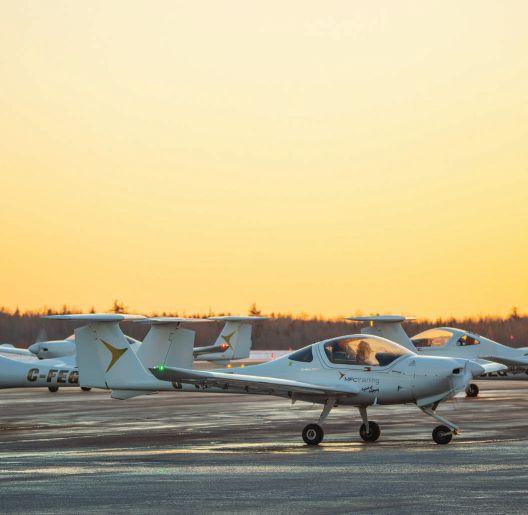
Maintenance program combines theory with hands-on experience. Students undergo training on helicopters, fixed-wing aircraft, piston and turbine engines, all while learning safety protocols, standard practices, and inspection and repair techniques. The program features a mandatory paid summer co-op work placement. Eligible graduates earn up to 21 months credit toward AME license requirements. Aviation Technician – Aircraft Maintenance is recognized by the Canadian Armed Forces AVN program.
The Aviation Flight Management Program, marking its 50th anniversary in 2024, is a condensed 2.5-year advanced diploma program, running at just 21 months. Flight training starts in the first semester with students ultimately earing a Commercial Pilot License, while also learning business facets of flight operations. Delivered at the TEC Hub, the 3-year Aerospace Manufacturing Engineering Technology and Technician programs work with advanced design programs, equipment and materials to allow students to excel in aviation manufacturing and engineering work.
Fanshawe College’s Norton Wolf School of Aviation and Aerospace Technology provides a range of aviation focused programs, including: Aircraft Structural Repair Technician (certificate); Flight Services (certificate); Aviation Technician – Aircraft Maintenance (diploma); Aviation Technician- Avionics Maintenance (diploma); Aviation Technology – Aircraft Maintenance and Avionics (advanced diploma); Commercial Flight and Aviation Leadership (advanced diploma); Applied Aerospace Manufacturing (graduate certificate); Composites and Advanced Materials Aerospace Manufacturing (graduate certificate); Remotely Piloted Aerial Systems Commercial Operations (graduate certificate); and Aerospace Operations Management (graduate certificate).
Fanshawe College explains its Transport Canada-approved programs encompass manufacturing, maintenance, fleet service, flight and administration, producing graduates that make their mark not just in Canada, but around the world. The Norton Wolf School of Aviation and Aerospace Technology is built as a hub of excellence that continues to expand and evolve to meet student and employer needs. In its Commercial Flight and Aviation Leadership advanced diploma program, students have the option to complete a Canadian Private and Commercial Pilot license including night, multi-engine and instrument ratings. The school has close partnerships with London International Airport, Diamond Aircraft and Diamond Flight Centre.
Georgian College’s three-year Aviation Management advanced diploma program consists of 38 courses, and students graduate with both a management and aviation skill set. Management courses are designed to give students an understanding of marketing, human resource management, communications and project management. A variety of aviation courses provide a solid understanding of the aviation industry in Canada and around the world. Students will also complete the examination to receive their Restricted Aeronautical Radio Operation License. The program, which has a fall 2024 intake, includes three hands-on co-op opportunities within the aviation industry.
MFC Training is Canada’s professional flight school with almost a century of flight.
The program has an active advisory committee that helps maintain program relevancy by keeping the course content current –reflecting industry trends – and ensuring graduates are job ready with the required skillset. There are several educational pathways for graduates. Georgian’s Aviation Management program is the only three-year program in Canada that allows students direct entry into Griffith University’s Master of Aviation Management, which can be completed with only an additional one-and-a half
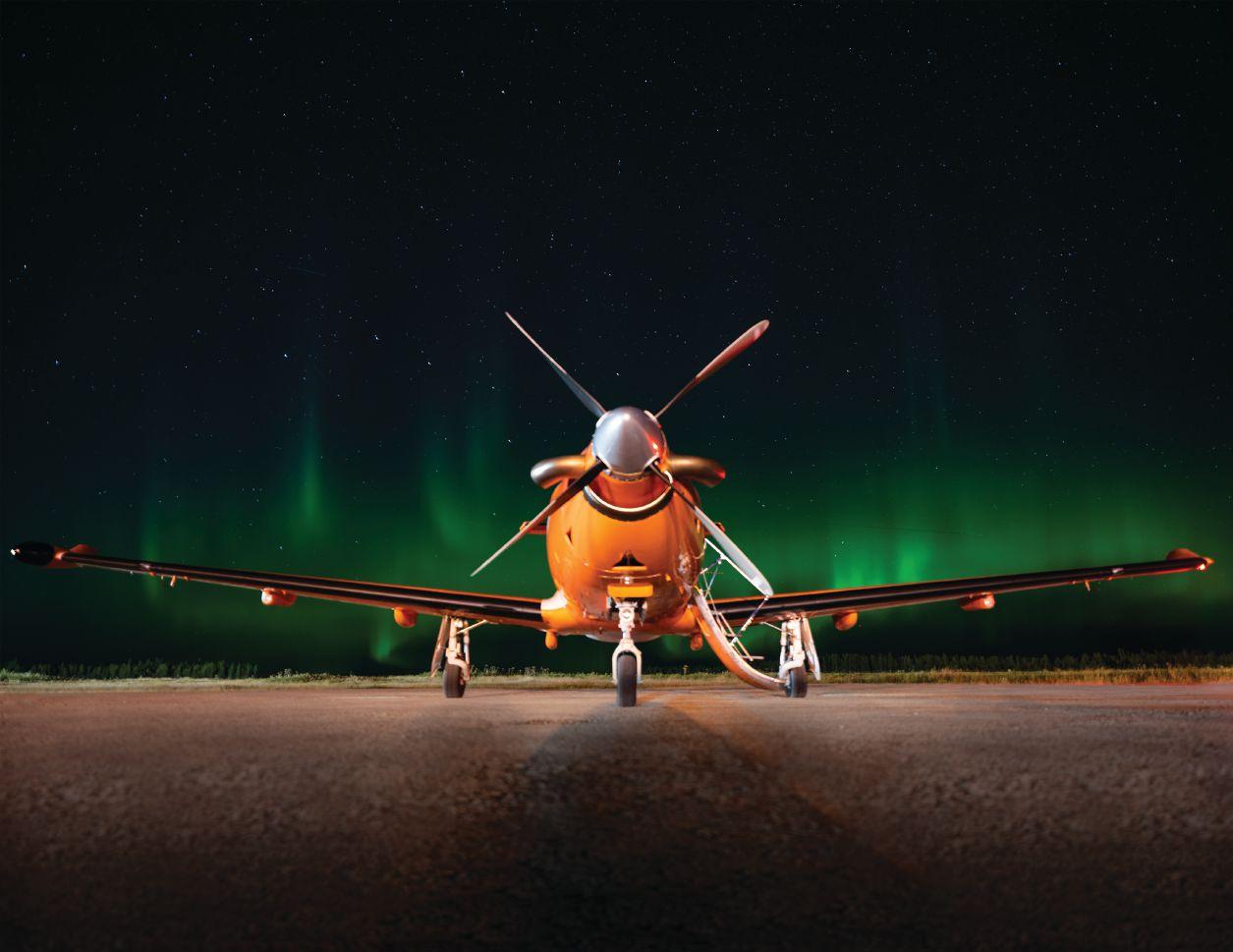
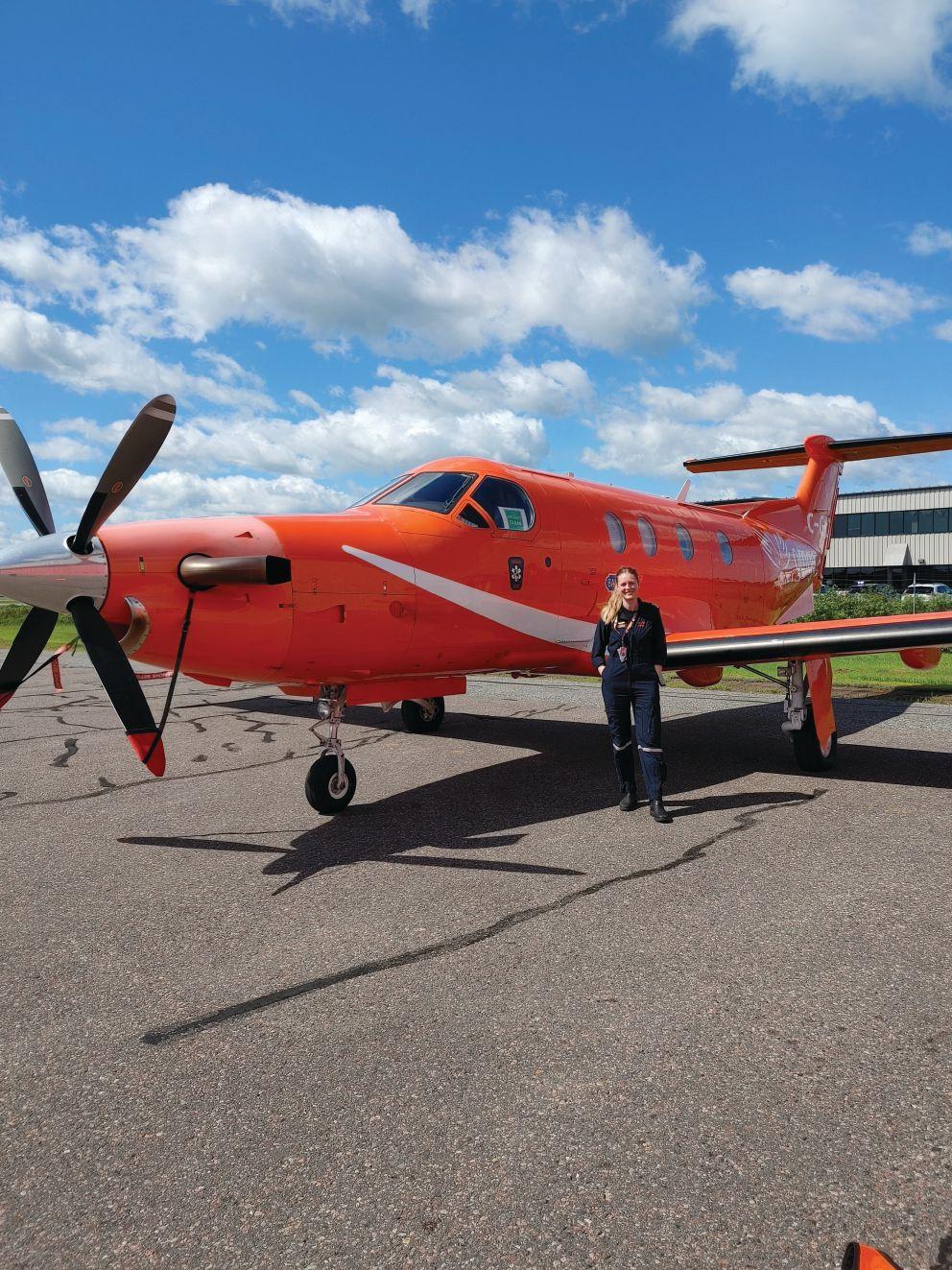







Certificates
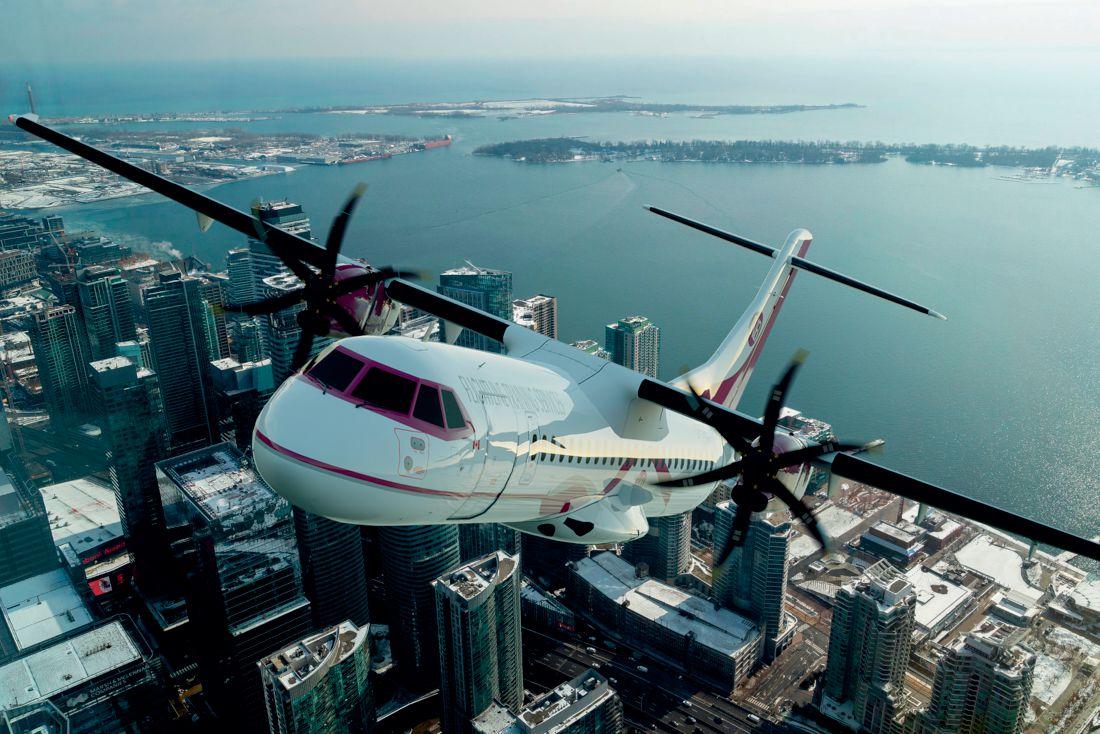

• Aircraft Structural Repair Technician
• Flight Services
Diplomas
• Aviation Technician – Aircraft Maintenance
• Aviation Technician – Avionics Maintenance
Advanced Diplomas
• Aviation Technology – Aircraft Maintenance and Avionics
• Commercial Flight and Aviation Leadership
Graduate Certificates
• Applied Aerospace Manufacturing
• Composites and Advanced Materials
Aerospace Manufacturing
• Remotely Piloted Aerial Systems
Commercial Operations
• Aerospace Operations Management

years of study. Students can also choose to complete one of four Bachelor of Science degrees with Embry-Riddle Aeronautical University, with only one additional year of study.
Sault College | Sault Ste. Marie Sault College`s Aviation Technology –Flight 3-year program is designed to prepare students for a career as a professional pilot. Graduates of the program who meet qualification criteria established by Transport Canada, will have successfully completed the requirements for the Integrated Commercial Pilot License Aeroplane, including the multi-engine instrument rating (CPL(A)IR). This licence meets all the requirements for a student to be a commercial pilot.

Individuals with previous flight training start with a modified flight training program in the beginning; however, all students will be at the same level by second year. Students gain hands-on training with the college’s own fleet of aircraft, including 10 Zlin and two Seminole Piper planes. These aircraft are supported by advanced flight simulators. Each aircraft includes advanced radio navigation systems and realtime aircraft tracking systems.
Seneca Polytechnic | Peterborough and Toronto Seneca College, through its School of Aviation, is now educating students at the degree level with its 4-year Honours Bachelor of Aviation Technology program, which provides a technology-based curriculum and application of this theory to aviation. Flight training and classroom instruction for students in year’s two to four of the program takes place at Seneca’s Peterborough Campus. Seneca’s aviation school enjoys a close relationship with Jazz Aviation through a first-of-its-kind cadet program and the flight instructor pathway program. As a graduate, students may pursue future career options like professional pilot, flying instructor, air traffic controller, and civil aviation inspector.
Seneca also provides the Aviation Safety advanced diploma program covering a range of areas relevant to the aviation industry. It focused on theoretical knowledge of aviation regulations in the Canadian aviation industry, as well as business, leadership and technical skills required to implement policies and procedures. Seneca’s Aviation Operations program provides a diploma focusing on theoretical knowledge of aviation regulations in the Canadian aviation industry, as well as the technical and practical skills required to work in a variety of airside operations roles. | W

AVIATION AND AEROSPACE DEGREE PROGRAMS BY PROVINCE
University of the Fraser Valley | Fraser Valley University of Fraser Valley offers a Bachelor of Business Administration in Aviation degree, which allows students to earn credit from ground school and in-air flight training at a flight school of their choice. Flight training can be done before, during, or after taking your University of Fraser Valley courses and students have the option to switch flight schools. Required Transport Canada licenses and ratings include Private Pilot License, Commercial Pilot License, Instrument Rating, and one of Multi-Engine Rating or Flight Instructor Certification. The Business Administration in Aviation program in 2022 introduced a co-op stream. University of Fraser Valley also offers a two-year Business Administration – Aviation diploma that provides a strong foundation in business and allows students to earn credit for advanced flight training.

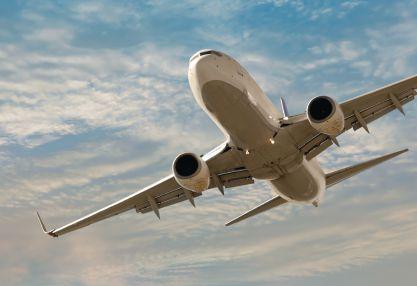
University of British Columbia | Vancouver
University of British Columbia’s Mechanical Engineering degree program allows students who have completed Mech 2 to focus on an Aerospace Option with a modified curriculum of mechanical engineering courses that focus on fluid dynamics and aircraft design. The modified curriculum is designed to not only help develop the student’s specialization in aerospace, but also develop fundamental design and analytical skills required by a mechanical engineer. the school points to its robust faculty research in combustion, fluid dynamics, solid mechanics, fluid-structure interactions, sensors and controls – all areas central to aerospace design. Its facilities include two wind tunnels, and a machine shop. Students can participate in aircraft competitions and teams, including UBC Uncrewed Aircraft Systems and UBC AeroDesign.
MacEwan University describes as a unique partnership with Transport Canada-approved training centres to complete a Business Management diploma with a specialization in aviation management. Students in the Aviation major complete 15 of the 20 courses from the Business Management diploma, which provide core business skills in accounting, marketing and strategic management. The remaining five courses are replaced with aviation training. Students can block transfer credits to the third year of MacEwan’s Bachelor of Commerce degree program.
Mount Royal University | Calgary
Mount Royal University’s two-year Aviation Diploma program combines an academic diploma with the flight training needed to become a commercial pilot. The diploma is recognized as one of Canada’s elite Aviation Accreditation Board International (AABI) accredited programs, integrating academic preparation with flight simulator training for a Commercial Pilot Licence (CPL) with multi-engine and instrument ratings. The program allows students to learn aviation and business theory, while building connections with MRU’s airline partners, including Jazz, WestJet, Porter, AirSprint, and Sunwing. The program also focuses on giving students an understanding for how to fly in single- and twopilot operations using crew resource management skills. Students graduate with a minimum of 200 hours of flying time.
Carleton University | Ottawa
Carleton’s Aerospace Engineering program emphasizes the development of analytical, computational, and hands-on engineering and design skills related to the aerospace field. The broad range

OPPORTUNITY
HEADQUARTERED

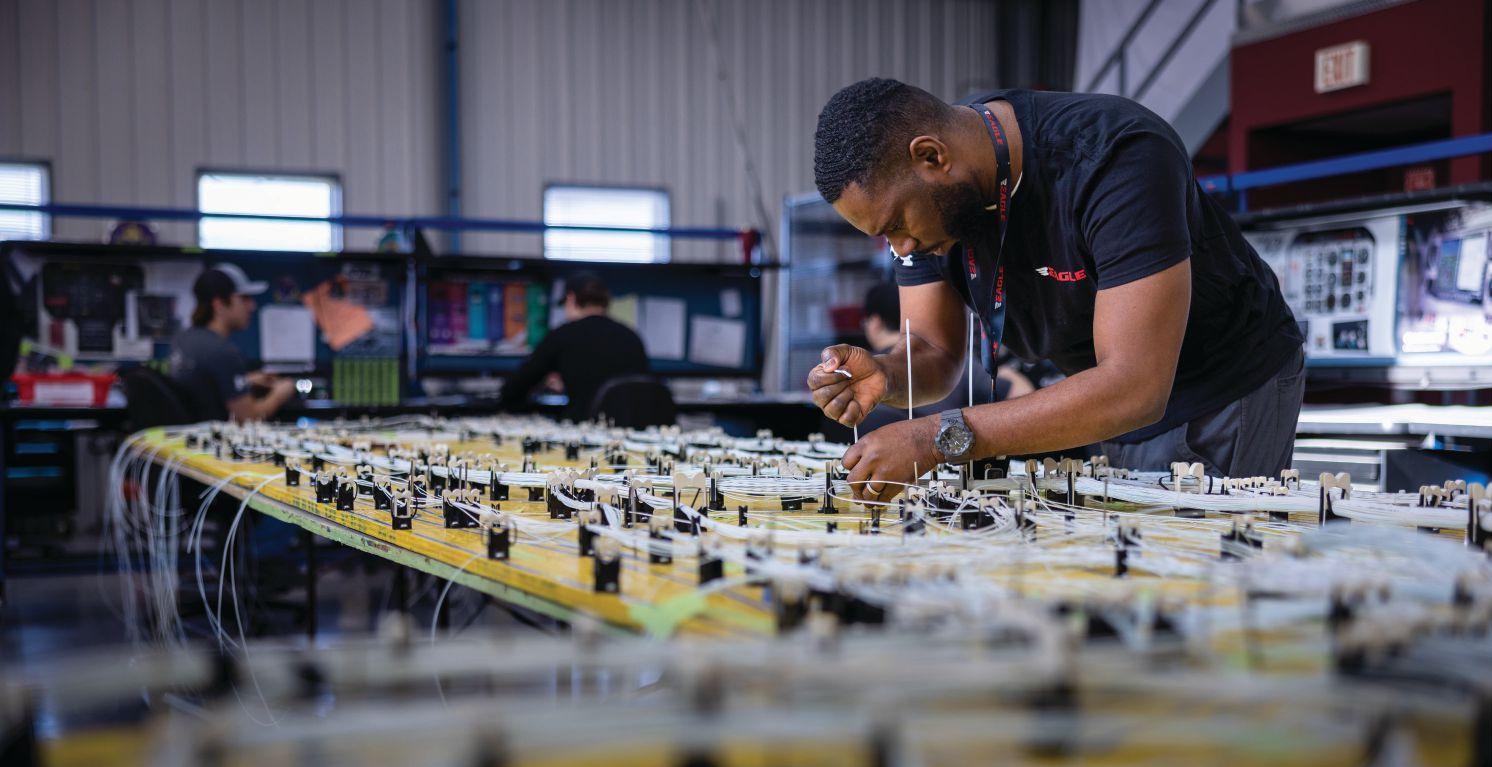










of topics and applications included in this discipline are covered in four streams: Aerodynamics (aerospace propulsion and atmospheric flight); Aerospace Structures (lightweight vehicles for flight and space travel); Aerospace Electronics and Systems (aircraft control, communication and navigation systems); and Space Systems Design (astronautics and space/satellite technology).
The Mechanical and Materials Engineering degree program at Queen’s University provides opportunities geared at aviation and aerospace design. The program’s Airplane Aerodynamics is a course highlight. Students will combine the study of basic engineering with practical courses in machine design, robotics and manufacturing methods. Hands-on design is integral to this program, with specialization in aerospace, mechatronics, biomechanical, manufacturing, materials, and thermofluids.
Toronto Metropolitan University | Toronto
Toronto Metropolitan University’s Aerospace Engineering Bachelor’s program
provides students with the opportunity to study aerodynamics, stress analysis and structural design, flight mechanics, stability and control, aircraft performance, propulsion, avionics and systems. Students also learn to design, test, manufacture and maintain aircraft or spacecraft, as well as vehicles for transport on land and water. The program provides knowledge to work in fields involving commercial and military aircraft or spacecraft engineering; space exploration, teaching, research, military service; air transportation and spacebased telecommunications. The school also allows students to pursue a graduate degree (MEng, MASc, PhD) in aerospace engineering.
of Toronto | Toronto
Students who wish to study Aerospace Science and Engineering at the University of Toronto enroll in the four-year undergraduate Engineering Science program. In the first two years, this program emphasizes mathematics, chemistry, physics and computing. Towards the end of the second year of Engineering Science, students must select a speciality option for their third and fourth years of study. This includes
The Flair Cadet Program is an iATPL course designed for people with little or no flight experience. Flair Airlines offers accepted students a conditional offer of employment; pending graduation, you are eligible to fly B737s.
an Aerospace Engineering option, taught primarily by UTIAS professors. UTIAS is the university’s graduate program focused on scientific exploration and aerospace research. UTIAS faculty members are international leaders in computational aerodynamics, micro and nanosatellites, combustion and propulsion, robotics for space and terrestrial applications.
University of Waterloo | Waterloo
Established in 2007, Waterloo’s Aviation program is described as the largest university-level aviation program in Canada. The Bachelor of Environmental Studies (BES) degree focuses on geography to interpret weather patterns, identify land formations, read multi-layer maps, and use tools such as geographic information systems and remote sensing. Students can also add specializations in Climate Change, Earth Systems Science, Geomatics, and Economy and Society. The Science and Aviaton program is supplemented with courses on cartography, climatology, geographic information systems, aerodynamics and remote sensing. Both programs provide access to Preparatory Ground Instruction and professional pilot theory courses taught
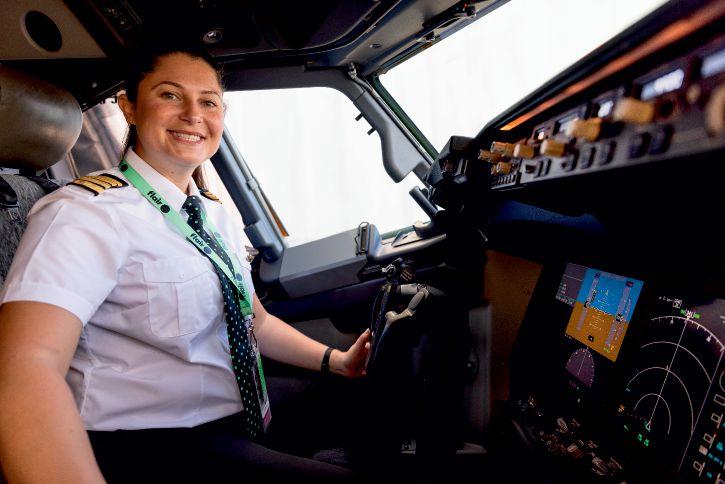


by a Waterloo Wellington Flight Centre (WWFC) instructor. Upon graduation, the student will possess a CPL as well as MultiEngine and Instrument Ratings. The Waterloo Institute for Sustainable Aeronautics has also partnered with WWFC to operate an all-electric Pipistrel Velis Electro.
The Aeronautics Leadership Program at the University of Windsor offers a unique blend of a Liberal Arts and Leadership-focused education with practical flight training. Students pursue a Bachelor of Arts in Liberal Arts and Professional Studies, specializing in Aeronautics Leadership. This Bachelor of Arts degree is complemented by ground school and flight training, conducted with Journey Air Pilot Training, situated at Windsor International Airport (YQG).
Western University | London
Western’s Commercial Aviation Management program allows students to earn a Bachelor’s degree in Management and Organizational Studies, with specialized courses in aviation management. Within the program, students have the option to combine a degree with professional pilot flight training,
ultimately receiving a Transport Canada approved Integrated Commercial Pilot License with Multi-Engine and Instrument Ratings.
York University | Toronto
The Space Engineering program (BEng) at York’s Lassonde School of Engineeringt focuses on areas of study from orbit control and space-based optics to ground station communications and robotics. Students learn about the management of complex multidisciplinary projects, including missions within the solar system. The co-op program allows students to gain professional experience.
Concordia University | Montreal
Concordia’s Aerospace Engineering (BEng) program is offered by the Department of Mechanical, Industrial and Aerospace Engineering. The program allows students to specialize in Aerospace and Propulsion, Aerospace Structures and Materials, or Avionics and Aerospace Systems. It provides access to areas like mechanical, electrical, computer, and industrial engineering to the conception,

design, implementation and operation of aerospace systems.
Mount Allison University |
Dieppe and Sackville
Mount Allison’s Aviation degree program combines flight training with undergraduate studies in Arts, Commerce, or Science. The Bachelor of Arts – Aviation program is designed for students to combine aviation training with studies in arts and humanities and social sciences. As an Arts student you will complete a major in any discipline offered for a BA degree (no minor required). The Bachelor of Commerce – Aviation program is designed for students to study business areas such as accounting, finance, marketing, and management. The Bachelor of Science with a major in Aviation program is designed for students to be able to combine flight training with studies in subjects related to the field of aviation in the Faculty of Science, such as geography, environmental science, mathematics, physics, and computer science. MFC Training at the Moncton Airport provides the flight component of Mount Allison’s aviation programs.| W



British Columbia Institute of Technology | Vancouver British Columbia Institute of Technology (BCIT) School of Transportation prepares students for careers as Aircraft Maintenance Engineers, Aviation Maintenance Technicians (Avionics) and Gas Turbine/ Jet Engine Technicians. Its Aerospace Technology Campus is located near Vancouver International Airport in Delta with a 40,000-square-foot hangar that holds a fleet of light piston, turboprop, corporate and jet transport aircraft, as well as light and medium helicopters. Completion of its Aircraft Maintenance Engineer (AME) program will result in a work experience credit of 18 months of the 48 months required by Transport Canada toward obtaining an AME license.
IMP Academy | Abbotsford, Halifax
IMP Aerospace & Defence recently launched the unique IMP Academy in both Abbotsford and Halifax. The paid apprenticeship program targets those aspiring to start to their career as Aircraft Maintenance Technicians. While the program aims primarily to engage recent high-school graduates, IMP explains this program is for anyone looking for their aerospace career take off at one of Canada’s top defence companies. The program will open with a fourweek Introduction to Aerospace Skilled Trades Program, after which interested candidates can apply to the Aircraft Maintenance Apprenticeship Program. There are no textbook or tuition fees.
Southern Alberta Institute of Technology | Calgary
SAIT provides a range of aviation-focused
programs at the Art Smith Aero Centre, occupying 17 acres of land at Calgary International Airport. The Aircraft Structures Technician program includes courses on traditional aluminum sheet metal structure and advanced composite material manufacturing and repair. The Aircraft Maintenance Engineers Technology program provides skills to begin a career as an aircraft maintenance technician. Graduates in compliance with the required attendance (95 per cent) and minimum marks of 70 per cent in each course will receive a Transport Canada credit of 18-months of work experience toward the “M” license. The Avionics Technology program at SAIT provides the skills required to earn an “E” license for servicing aircraft electrical and electronic systems.
Red River College | Winnipeg
Red River College Aircraft Maintenance Engineer program is designed to develop skills to maintain of large and small airplanes and helicopters. Time in the program is split between the study of aircraft maintenance theory and practical projects.
Algonquin College | Ottawa
Alqonquin College offers two diploma programs in the school’s Transportation Technology segment called Aircraft Maintenance Technician and Aviation Management, General Arts and Science – both running for two years.
Canadore College | North Bay
Canadore College’s AME programs include: Aircraft Structural Repair Technician; Aviation Technician – Aircraft Maintenance; Aviation Technician – Avionics

Maintenance; Aviation Technology – Aircraft Maintenance and Avionics; and Aviation Technology – Aircraft Maintenance and Structures. The Aircraft Structural Repair Technician program allows students to specialize in repair, upgrading and the modification of an aircraft. The Aviation Technician – Aircraft Maintenance program trains students how to troubleshoot vital aircraft components and systems, including piston and turbine engines, electrical systems, hydraulics, and navigation and communication systems.
Centennial College | Toronto
Centennial College’s Aircraft Maintenance – Aviation Technician provides students access to modern labs and the school’s aircraft hangar with both fixed- and rotary-wing aircraft. Students work on components like airframes, engines, electrical and hydraulic systems, propellers, avionics equipment and aircraft instruments. The Avionics Maintenance - Aviation Technician program prepares students for work as a bench technician with a broad base of knowledge for complex electronics and electrical systems related to the navigation, guidance, communications, instrumentation and flight controls of an aircraft.
The Aircraft Maintenance and Management – Aviation Technology program allows students to work on components such like airframes, engines, electrical and hydraulic systems, propellers, avionics equipment and aircraft instruments. The Avionics Maintenance and Management – Aviation Technology program also focuses on essential theory and broad base of knowledge for complex electronics and electrical systems related to the navigation, guidance, communications, instrumentation and flight controls of an aircraft. This program will also give you the opportunity to obtain additional business skills.
Exam preparation
This two-day course will prepare prospective Aviation Maintenance Engineer (AME) learners to take Transport Canada’s Canadian Aviation Regulations (CARs) exam.
Attendees will learn how to navigate CARs and secure four months of access to course materials, including an interactive database of sample exam questions.


Saturday, March 2 - Sunday, March 3
Centre for Aviation Technology | Hamilton International Airport Register now mohawkcollege.ca/CARs

Confederation College | Thunder Bay
Confederation College's Aviation Center of Excellence, situated at Thunder Bay International Airport, provides a range of aviation programs, including: Aviation Technician – Aircraft Maintenance (coop); Aviation – Flight Management; and Aerospace Manufacturing Engineering Technology. The 2-year Aviation Technician – Aircraft Maintenance program combines theory with hands-on experience. Students undergo training on helicopters, fixed-wing aircraft, piston and turbine engines, all while learning safety protocols, standard practices, and inspection and repair techniques. Eligible graduates can earn up to 21 months credit toward AME license requirements.
Fanshawe College | London
Fanshawe’s Norton Wolf School of Aviation and Aerospace Technology provides a range of aviation programs, including: Aircraft Structural Repair Technician (certificate), Flight Services (certificate), Aviation Technician – Aircraft Maintenance (diploma), Aviation Technician- Avionics Maintenance (diploma), Aviation Technology – Aircraft Maintenance and Avionics (advanced diploma), Commercial Flight and Aviation Leadership (advanced diploma), Applied Aerospace Manufacturing (graduate certificate), Composites and Advanced Materials Aerospace Manufacturing (graduate certificate), Remotely Piloted Aerial Systems Commercial Operations (graduate certificate) and Aerospace Operations Management (graduate certificate). Fanshawe partners with London International Airport, Diamond Aircraft and Diamond Flight Centre.
Flightline Training Services | Brampton
Flightline Training Services is a Transport Canada Approved Training Organization for commercial and business aviation aircraft.

Flightline tailors courses and services to meet training needs. With its Transport Canada and EASA approvals, Flightline is worldwide training organization.
Mohawk College | Hamilton
Mohawk College offers a range of aviation programs including Aviation Technician – Aircraft Maintenance, Aviation Technician – Avionics, and Aviation Technician – Aircraft Structures. The twoyear diploma programs run at its Hamilton International Airport campus, adjacent to KF Aerospace’s 75,000-squar-foot hangar. Students have access to more than 20 aircraft in the Mohawk hangar.
Nova Scotia Community College | Dartmouth
Nova Scotia Community College’s Aviation Institute is located in a 43,000-square-foot training facility. It provides a two-year Aircraft Maintenance Engineer, Mechanical, diploma program. Courses focus on aircraft servicing and ground handling functions, and maintaining aircraft systems.
Holland College | Summerside
Holland College provides a one-year Aircraft Turbine Technician certificate program at its Summerside Campus. Aircraft turbine technicians inspect aircraft engines, troubleshoot issues with mechanical systems, and modify, repair, and test turbine engines. Students learn techniques, procedures, and documentation requirements with an emphasis on practical training. | W
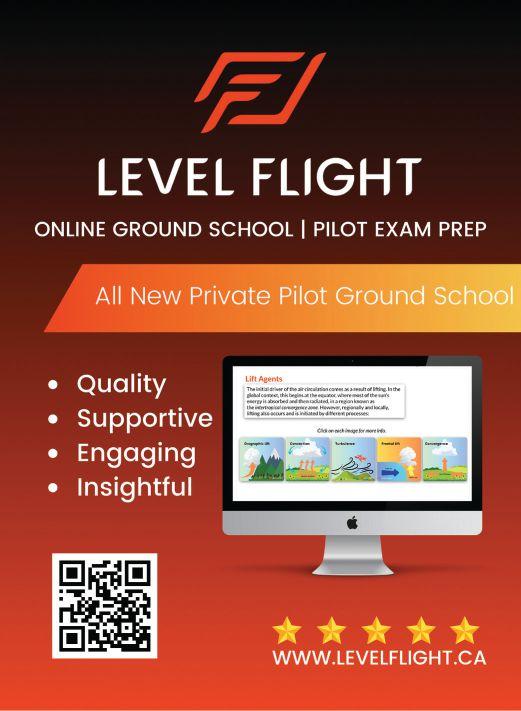

The next generation of pilots are born on a Diamond. Trusted by flight schools around the world, our DA40 and DA42 aircraft are designed to maximize learning transfer and utilization for students, while providing industry-leading safety and cost-effectiveness for flight schools.
Discover the DA40 and DA42 and set your students up for unparalleled success.



By Gordon Osinski |
On Jan. 9, NASA announced it would be shifting the launch of Artemis II to September 2025. Artemis III – the first mission to land humans on the surface of the moon since 1972 – was moved to September 2026. I am a professor, an explorer and a planetary geologist. For the past decade, I have been helping to train Canadian and U.S. astronauts in geology. I am also the principal investigator for Canada’s first ever rover mission, and a member of the Artemis III Geology Team.
It has been 52 years since humans last walked on the surface of the moon. Since then, humanity has not ventured beyond low Earth orbit, about the distance from Halifax to Fredericton, or Toronto to Ottawa. In Greek mythology, Artemis was the daughter of Zeus and the twin sister of Apollo – a fitting name for the program that will take humans back to the moon. Unlike Apollo, the Artemis program also has the explicit goals of establishing the first long-term presence on the moon –similar to Antarctica research outposts –and sending the first astronauts to Mars.
The Artemis missions are ambitious to say the least, and represent the next major collaborative international effort, building on the success of the International Space Station. Indeed, with the addition of Angola in November, 33 nations have now signed the Artemis Accords. The Accords lay out a common set of principles for the exploration and use of outer space. Canada was one of the original eight countries to sign these accords. A core principle of the Artemis Accords is to enhance peaceful relationships between nations, which is needed now, perhaps more than ever since the Cold War.
After the success of the Artemis I mission in late 2022, most people probably thought there would be a quick succession of missions and we would be back on the lunar surface in no time. While the originally planned two years between Artemis I and II may sound like a long time, it is in terms of space exploration, where the development of missions is often measured in decades.

The major reason for this is that space is incredibly unforgiving. From withstanding the huge G-forces and vibrations as the rocket accelerates to more than 40,000 kilometres an hour during launch – the velocity needed to escape Earth’s gravity – to the extremes of temperature, designing technologies for space is hard and costly.
Every piece of the Artemis infrastructure must be tested and tested again to make sure it can withstand the rigours of space. The environment of the moon is a particularly challenging thermal environment, with a staggering 300 C temperature difference between the lunar day and night.
Some of this testing can be done in a laboratory; however, once a certain scale is reached, this becomes impossible. Take SpaceX’s Starship, the largest and most powerful rocket ever flown and a key part of the architecture for Artemis.
On Nov. 18, its second launch, the Starship exploded after reaching its goal of
entering space. SpaceX engineers gathered a wealth of data to improve the design of Starship. However, the test made it clear that this rocket, which will be used to land the Artemis III crew on the surface of the moon, simply wasn’t going to be ready for a 2025 launch.
The stakes could not be higher for the Artemis II mission as onboard, for the first time, will be four astronauts, including Canadian Jeremy Hansen. While not scheduled to land on the surface of the moon, Artemis II is still an incredibly challenging mission that carries with it an element of risk that comes with any first Indeed, this will be the first time humans will fly in NASA’s Orion spacecraft and the first mission to take humans beyond low Earth orbit since Apollo 17 in 1972. If this mission is successful, these four astronauts will have boldly gone farther from our home planet than any other humans, ever. So it makes sense to take time, especially considering some of the obstacles still facing Artemis II.
On the plus side, the Artemis II crew will have more time for training. Having been involved in providing geology training to two of the Artemis II crew last September – Hansen and Christina Koch – having an additional few months for training will definitely not go to waste. This delay will also give Canadian astronaut Jenni Gibbons time to come up to speed with training as part of the backup crew for Artemis II – a job she was only assigned in November.
On the same day that NASA announced the delays to the Artemis program, the U.S.
company Astrobotic announced that its Peregrine lunar lander suffered a “critical loss of propellent” not long after launch. This means there is no chance of it being able to land successfully on the moon.
The lander has been gathering valuable data while its fuel supplies lasted, so all is not lost. This is also the first launch as part of NASA’s new Commercial Lunar Payload Services (CLPS) initiative.
Despite the failures and setbacks in the Artemis and CLPS programs, 2024 promises to be the most exciting year for lunar exploration in decades. Astrobotic

is planning two more launches, including NASA’s ambitious Volatiles Investigating Polar Exploration Rover (VIPER).
Two other U.S. companies, Intuitive Machines and Firefly Aerospace, are also scheduled to launch their first lunar missions. On January 19, the Japanese space agency JAXA landed its Smart Lander for Investigating Moon (SLIM) – making Japan only the fifth country to do so, following the United States, Soviet Union, China and India in reaching the moon.
I will be watching these upcoming CLPS missions closely, as one of these companies will take the Canadian Lunar Rover to the moon no earlier than 2026. Even before this mission, thanks to the Canadian Space Agency’s Lunar Exploration Accelerator Program, Canadian companies such as Mission Control Space Services and Canadensys are working on software and hardware to contribute to various CLPS missions.
Almost lost in the details of NASA’s announcement about Artemis II and III was the statement that Artemis IV remains on track to launch in September 2028. In addition to landing two astronauts on the lunar surface, a major objective for Artemis IV will be the continued assembly of the Lunar Gateway.
The Gateway is a small space station that will act as an outpost orbiting the moon, providing support for lunar surface missions and, in the longer term, as a staging point for further deep space exploration. The Gateway will be the home for Canada’s biggest financial contribution to Artemis: Canadarm3.
Currently being built by Canadian company MDA Space with the support of dozens of Canadian partners and suppliers, Canadarm3 represents the next generation of space robotics. In contrast to the International Space Station, astronauts will not always be present on the Gateway, so Canadarm3 is being built with advanced AI-enabled sensors to enable autonomous operations. Just like what Canadarm did for the Space Shuttle Program and Canadarm2 did for the ISS, Canadarm3 will be an iconic reminder of Canada’s international status as a spacefaring nation. | W
This article was originally published by The Conversation. Dr. Gordon Osinski is a Professor in the Department of Earth Sciences at the University of Western Ontario. He holds a PhD from the University of New Brunswick (2004) and a BSc (Hons) from the University of St. Andrews (1999), Scotland, both in Geology. Dr. Osinski is the Director of the Canadian Lunar Research Network.
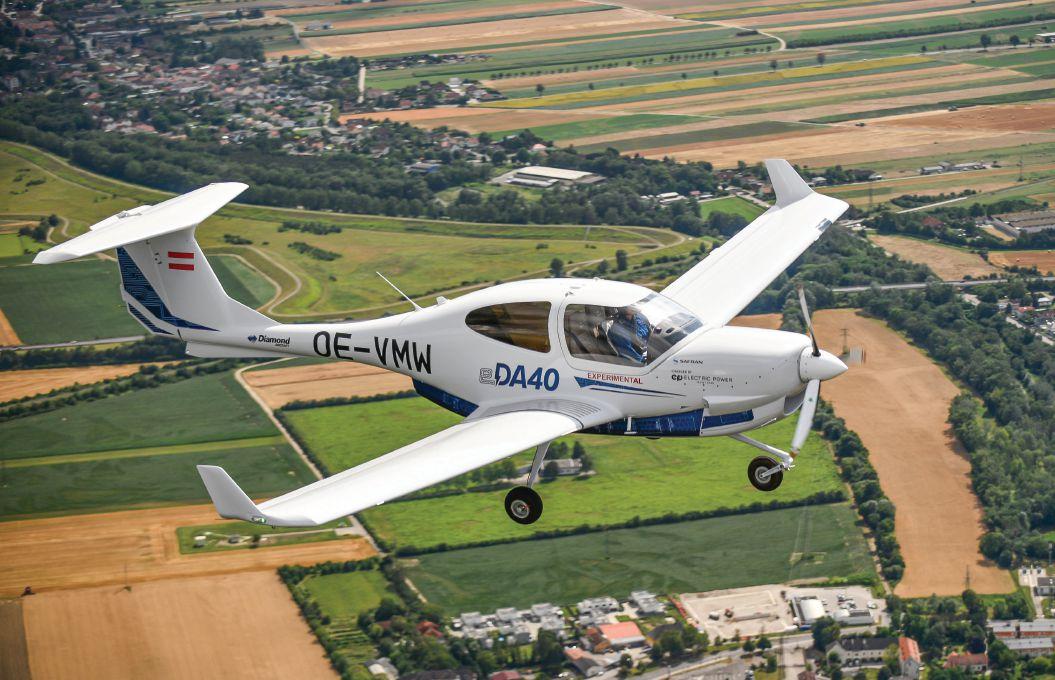
BY PHIL LIGHTSTONE
Flight Training Units are the linch pin creating and growing aviation in Canada. Whether flying within general, business or commercial aviation, or any sector of the industry, pilots all start off in the same place, in the left seat of a Cessna 152/172 or a Diamond DA40 aircraft. Flight Training Units (FTUs) like Sault College have standardized on Zlins while Seneca College has a fleet of Cessna and Beechcraft aircraft.
Canadian Flight Training Units face many challenges, least of all winter. Many Ontario FTUs report that owning and operating a flight school has its own unique set of challenges (as compared to other aviation enterprises). All of the FTUs interviewed for this article stated, that under the current market conditions, with demand for flight training services exceeding supply, their operations are profitable. Most organizations declined (for obvious reasons)
to quantify their profitability. A common observation was the need to scale their operations to generate a meaningful Return on Investment (ROI).
Primary impediments to profitability fall into two buckets: The weather; and commercial operators and airlines recruiting flight instructors from the FTUs. In Ontario, the average flyable days for flight schools over the past five years was 160 days. No surprise there. However, those flyable days contain many half days. Clearly the financial burden which the FTUs face is the amortization of fixed costs over a limited number of revenue generating days. Fixed costs such as rent, aircraft leases, administrative salaries, aircraft maintenance activities, professional services, to name a few, remain static as compared to the somewhat variable revenue sources. Flyable days can be offset to some degree through the utilization of certified simulators. Based upon the current profitability
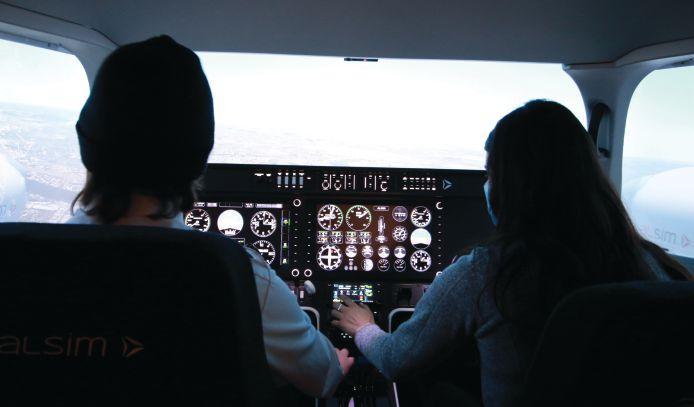
levels, one would argue that operating in a weather environment whereby the number of flyable days is increased to 90 per cent, would generate an attractive ROI.
The second constraining factors relates to the quantity and quality of flight instructors. With Category Four and Category Three instructors being siphoned from FTUs to the commercial operators, FTUs are seeing one to one and half years of revenue from their investment into flight instructors. Some larger FTUs are burdening their profitability with Human Resources salaries, recruitment activities, onboarding and training costs. Interestingly, during economic times of prosperity, with consumer disposable income on the rise, the airline industry increases its recruitment activities with a twofold outcome: Young people are attracted to the aviation industry (increasing demand); and the airlines recruit instructor pilots from the FTUs (reducing supply). During times of economic downturns, the airlines will furlough pilots, increase the supply of instructors, but reducing the demand for FTU capacity. The past decade has seen either a feast or famine with no happy equilibrium.
An outcome of the COVID-19 pandemic is the rise in cost for typical training aircraft. Used Cessna 172s have seen a triple to quadruple increase in retail prices, while a brand new C172 has a two-year delivery time line. Canadian Flyers, now located at the Lindsay/Kawartha Lakes Municipal Airport (CNF4), manages its aircraft costs through standardizing on Cessna 172Ms. While flying older aircraft (vintage 1970s), the reliability of the airframe and the ability to swap components between aircraft, allows the utilization rates of its fleet to be improved. However, aircraft accidents and incidents may cause aircraft
to be prematurely taken off-line either for repairs or replacement. Canadians Flyers had several incidents, including a York Regional Police RPAS (drone) colliding with its C172 (on final to runway 15 at CYKZ). Repairs to the aircraft were costly, but the impact to lost revenue was much greater. With a reduction in the fleet, the cost of goodwill both on a staff and customer level is immeasurable.
The Brampton Flight Centre (BFC) reports that the cost of fuel represents roughly 35 per cent of the aircraft’s hourly rental rate. BFC is unique in the Canadian FTU environment in that it owns the airport, lands, buildings, restaurant, aircraft and FTU with no debt. As such, its fuel is purchased on a wholesale level, whereas other FTUs purchase fuel from the local FBO (which has profit embedded in the price per litre). BFC employees roughly 90 people of which 35 are directly related to the FTU. With
400 students, 22 aircraft, two simulators, and 33 instructors, the FTU contributes to the financial health of the airport. One might speculate that without the financial contributions of the FTU, the value of the land could force the sale and closure of the airport (not that different to the closure of the Toronto Buttonville Municipal Airport, CYKZ). However, the airport is operated as a not-for-profit organization, with any surpluses reinvested into the airport.
Risks to profitability within the FTU sector include hobbyists starting small flight schools employing one to three flight instructors. This impacts the quantity of Class One and Class Two instructors which can be used in larger operations to create new flight instructors. Without the experience and a day-to-day focus on flight school operations, valuable resources are siphoned off, with a dubious return on investment. Weather is a risk to both the total number of flyable days, but also weather events (micro bursts, hail, thunderstorms, forest fires and flooding), which can damage aircraft.
The University of Waterloo’s (UofW) aviation degree program, with flight training delivered by the Waterloo Wellington Flight Centre (WWFC), has 300 students enrolled over the four year course with 120 students admitted this year. With more than 600 student applicants (for 60 spots), many young people had to look to other colleges/universities and private flight training programs to fulfill their dreams. The flight training component of UofW’s aviation program is 100 per cent funded by the student. The academic portion of the aviation program is currently funding one third by the Ontario government (other provinces on average fund 57 per cent).
On the horizon waits the revolution of electric aircraft and its transition into

the FTU. Current e-aircraft such as Diamond’s eDA40 and Pipistrel Velis Electro are flying in Europe with the Velis flying in Canada. The Velis has a maximum: cruise of 98 kcas; altitude of 12,000 feet; range of 50 minutes; and useful load of 378 pounds. The UofW in collaboration with WWFC and Transport Canada (TC) have been flying a Velis since June 2023 (the aircraft arrived in October 2022), gathering data for both TC’s certification requirements and the economic modeling of e-aircraft in the Canadian context. Dr. Paul Parke reports: “I’m an optimist viewing the move to e-aircraft as a simpler, cleaner and lower cost alternative to Internal Combustion Engines.”
While battery longevity and cost of replacement have not been validated in the field, from an economics perspective, the potential future cost of battery replacement should be expected to be lower than overhauling a combustion engine every 2,000 to 3,000 hours. A typical flight school could easily put 500 to 1,000 hours on an aircraft annually. With pandemic induced inflation, the cost of Internal Combustion Engines overhauls has increased substantially. In a perfect world, where the airport has three phase power, the marginal cost of electrification infrastructure plus the cost of electricity is expected to be considerably lower than 100LL avgas. Fossil fuel costs will be further increased based upon the federal government‘s (both U.S. and Canada) mandate to eliminate lead from avgas. Ongoing research and development into revolutionary battery technology is expected to increase the energy to weight ratios, reducing weight, increasing battery charge cycles while reducing costs. The aviation sector will be able to leverage the investments made by the automotive sector. The net result will be an improvement to profitability and, over time (based upon the transition to e-aircraft), an improvement in ROI.
The American trend of airlines owning flight schools has migrated north of the border with Chorus Aviation, Jazz, CAE creating Cygnet Aviation Academy in Kingston, Ontario. The program (announced May 28, 2023) is designed to deliver students an integrated airline pilot license program, which takes 18 months to complete.
“Cygnet and CAE will combine hightechnology and leading-edge digital education and training to prepare direct-entryready First Officers for Canadian airlines,” says Lynne McMullen, President, Cygnet Aviation. “We’re excited to collaborate with Transport Canada to deliver a competencybased training model in support of cuttingedge programs for the next generation of aviation professionals. The launch of Cygnet establishes an organization dedicated
to developing airline-ready First Officers from start to finish, using state of the art Diamond Aircraft and flight simulation training devices.” Course fees for the program is $126,000 (plus HST, housing, remedial training, headset, uniforms, computers and books). Jazz will onboard commercial pilots with 500 hours at a First Officer base pay of $64,300 (plus a daily tax-free meal per diem on average of $9,000 per month).
In the Canadian context, there are 280 accredited FTUs with management dealing with a variety of daily challenges. Top
of mind is flight instructor recruitment and retention. Demand has been increasing year over year both from international and domestic students. The consensus within the FTUs interviewed for this article is, that in a perfect world (weather, aircraft availability and flight instructors), the FTU industry could easily accommodate double the number of students. Many, if not all, of FTU management are looking at solutions, strategies and tactics that will help narrow the gap between supply and demand. Only time will tell us about the ongoing trajectory of the Canadian FTU industry. | W

By David Carr
Skyservice has scaled up to grab a larger share of unprecedented growth in the business aviation sector. Developments include expanded MRO capacity, an increased FBO presence across North America and an exciting partnership with Fontainebleau in Florida
When you are at the top of your game, is there added room to improve and grow the business? That was the challenge facing Benjamin Murray, a veteran U.S. business aviation executive on his appointment as President of Skyservice in 2020 and then becoming President and CEO in March 2021. The economic impacts of Covid-19 were showing early signs of receding, but the border between Canada and the U.S. would not begin a gradual re-opening for another six months.
Skyservice is one of Canada’s only fully integrated business aviation companies, offering a suite of quality, whole lifecycle of aircraft ownership services, including FBO, aircraft management and maintenance, repair and overhaul (MRO), aircraft charter, and aircraft sales and acquisition. “During the pandemic we had two options,” Murray says. “Feel sorry for ourselves, or use the pause to reimagine what a business like Skyservice could look like as we pivot and emerge out of Covid.”
The company chose the latter, making Skyservice greater than the sum of its parts. It conducted a “deep dive” into each of the business lines, built energized management teams, invested in new technologies to scale up the platform to capture more of the pent-up demand that came with reopening the border, extended and renegotiated its FBO leases at airports across Canada, and launched an aggressive expansion and development strategy.
What emerged is centralized structure where Skyservice supplies essential shared services such as IT, HR, legal, financial administration and marketing to the business lines, freeing up each – FBO, Business Avi -

ation and MRO – to focus exclusively on growing its own piece of the pie. “We work for the businesses,” Murray says, describing the umbrella brand. “We are a cost centre for the businesses, and they have to receive value from us every day.”
The results have been nothing short of spectacular, with unprecedented growth in all three businesses, an expanded footprint across North America, including a market presence in some of the hottest markets, and agility to take advantage of new business opportunities when presented.
Murray attributes Skyservice’s post-Covid success to the power of focus. “We have seen our aircraft sales business blossom and can rival any standalone brokerage or consulting company across North America. Our charter business is growing as clients recognize the pedigree of our [managed] fleet,” he says. “We are meeting strong demand for scheduled and heavy maintenance in Canada and are getting customers back in the air quickly. Our FBO business is growing. Airport authorities see us as thought leaders and valuable partners in the future ecosystem of the airport.”
Skyservice was the first private aviation company to bring sustainable aviation fuel (SAF) to Canada and to Seattle, Washington’s King County International Airport-Boeing Field (BFI) and is talking with airports about bringing the eco-friendly fuel to their markets.
Each of these businesses present an entry point into the full Skyservice experience, and illustrate how the performance of one business unit can underpin the success of others. Nowhere is this more evident than the most visible point of the operation; the FBO.
In 2023, Skyservice won a request for proposal (RFP) to operate an FBO facility at Vancouver International Airport (YVR), replacing a 20-year incumbent. More

often than not in a new tender, the operator is flying blind. “An RFP to operate an FBO is not an acquisition,” Murray explains. “You get a bit of information about fuel volume and square footage. No information about current tenants or employees.”
Between being handed the keys to the Vancouver location at midnight April 1 and fuelling its first jet that morning, Skyservice had rebranded the facility, put fuel in the trucks, held onto almost all of the employees and achieved a near perfect customer retention rate. The Vancouver experience has been a positive one and Skyservice recently purchased the hangar adjacent to the FBO from London Aviation Centre.
“We’re a lot smarter in how we approach acquisitions,” Murray says. “Including where we can serve our existing customers in a more meaningful way.” Skyservice entered into a partnership with Fontainebleau Aviation, a division of luxury property and resort owner Fontainebleau Development, to take a majority ownership stake in the operating FBO at Miami-Opa Locka Executive Airport (OPF) and the FBO currently being developed by Fontainebleau at Fort LauderdaleHollywood International Airport (FLL). Both locations are in the Top 20 business aviation markets in the U.S. and represent a “go get” for Skyservice customers.
“Fontainebleau is an iconic brand that aligns perfectly with our values of service excellence, safety and exceptional amenities,” Murray says. “We are excited by what this partnership brings to our network, and what it will do to transform our business on the FBO side.” The partnership with Fontainebleau brings the number of U.S. properties to seven, including an FBO the company is developing at the exclusive Napa County Airport (APC), known as the Skyport to the Wine Country. Several airports are sole proprietor locations, making the brand more visible and relevant in the fast-growing U.S. market.


Skyservice manages one of the largest and newest nonowned aircraft fleets in the business aviation sector. Its business is driven by a healthy mix of corporate and high-net worth clients and charter customers who reach across all business units for support. The acquisition of an 80,000-square-foot heavy maintenance hangar, located on Percival Reid Road adjoined to Montréal’s Trudeau International Airport (YUL), has added capacity to perform nose-to-tail heavy aircraft maintenance and avionics upgrades for customers.
An emerging growth opportunity has been in à la carte services, including charter. “There are a lot of first-time charter clients who are sampling different types of aircraft to see what kind of airplane they like,” Murray says. “They are working with our aircraft consultant and sales and acquisition teams to purchase an airplane, based on their own trip profile.”
To build the charter relationship, Skyservice will rollout a loyalty program in 2024, offering value-added benefits to exclusive customers. Interestingly, a large volume of charter business comes from within, as embedded clients charter from Skyservice when their own airplane is out for maintenance or they temporarily require added capacity.
Putting the customer in the right airplane and surrounding them with upscale amenities and awardwinning service is part of the Skyservice experience.
“Once you become an aircraft owner, Skyservice elevates the ownership experience by providing nose-totail, full-service support,” Murray adds. “We consistently aim higher and reach further for our clients.”

BY JON ROBINSON
It is not until you drive or fly around at least part of Lake Superior, starting from somewhere in the population-rich southern infrastructure of the province, that you can truly appreciate the vastness of Ontario. Canada’s third largest province by landmass after Quebec and British Columbia, Ontario holds a population of more than 14.5 million people spread out over approximately one million square kilometres.
The Government of Ontario in November 2023 recognized the critical role Ornge plays in its health care system by confirming plans to expand its fixed-wing fleet with four additional Pilatus PC-12 NGX airplanes, in addition to a prior commitment to replace eight PC-12 NGs with the new, more
fuel efficient NGX variant.
The plan was first outlined in December 2022 with the goal of increasing Ornge’s ability to connect people in northern, remote and Indigenous communities to timely access of emergency care.
More than $108 million will be invested over the next few years to modernize Ornge’s fixed-wing fleet to provide Ontarians with safe and reliable air transport as part of their health care system. The provincial government is also providing nearly $10 million to transition Ornge’s Sudbury base to a larger hangar, which will be able to house both fixedwing and rotary-wing assets.
Together with 13 Crestline Commander land ambulances, Ornge also operates 12 Leonardo AW139 helicopters. It is
the fixed-wing fleet, however, that primarily serves the remote northern communities in the fight to provide health equity for Ontarians. Once the new 12-plane fleet starts to arrive in 2026, Ornge will be able to add two fully staffed, 24/7 air ambulance crews to further connect people in the region.
Health equity is a primary mandate of Ornge as its leadership envisions how they can play a larger role than that of a traditional air ambulance provider. This vision was reinforced and expanded during the COVID-19 pandemic.
“The distances involved are large. And so, you cannot talk about access to health care without fixed-wing transport,” says Dr. Homer Tien, President and CEO of Ornge. “It’s the only real meaningful
way to improve access to care right now in these northern communities.”
Tien joined Ornge as Chief Medical Officer in 2015 by way of the Canadian military and as the Medical Director of the Tory Regional Trauma Centre at Sunnybrook Health Sciences Centre. He became CEO of Ornge in January 2020 just prior to the pandemic and, in April 2021, Tien was appointed to head Ontario’s COVID-19 Vaccine Distribution Task Force for Phase 2 of the rollout. Tien witnessed firsthand the importance and capability for Ornge to be more than a traditional air ambulance provider. He is passionate about providing health equity to people in northern Ontario and works closely with Indigenous communities across the province.
“We helped with the remote Indigenous vaccination program during COVID. We were responsible for what was called Operation Remote Immunity,” says Tien. “[The government]
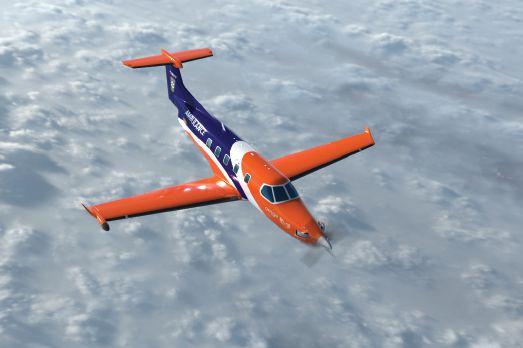
saw that if you have skilled health care providers like we do in our critical care paramedics, and fixed-wing aircraft, you can really improve access to health care, whether it be for emergencies or preventative like COVID vaccines.”
Tien explains Ornge is pleased with the state of its mid-life helicopter fleet, which began to receive an updated livery in 2021. The same design will be applied to Ornge’s new fixed-wing aircraft starting in 2026 with Pilatus deliveries scheduled to continue until 2030. By that time, Ornge is likely to have significantly grown its already prime position in Ontario’s health care system.
“The classic air ambulance [model] is a restricted role. Our involvement in the pandemic really showed us how healthcare is siloed,” says Tien, describing how Ornge’s work during the pandemic stretched into a new level of providing health care. One of the main challenges faced by the Ornge team during the pandemic came from local surges for health care needs. There was enough capacity in the system, explains Tien, but it meant that Ornge was transporting patients to where the capacity was.
“As the health care system evolves and there are more and more challenges, I think you’re going to need to see that integrator in the system playing a bigger role; and I think that’s us,” says Tien. “Transport obviously will play a huge role, but there’s going to be other things that come up that aren’t just about access to care. We will have a role because we have vehicles, we have airplanes, we have helicopters, we have skilled personnel, and we have a communications centre.
“There are very strong hospitals that represent local and regional [interests], Centres of Excellence for care, but all of that space in between needs filling,” Tien continues, describing rights of access to services like MRI and CT Scans for remote communities, in addition to the emergency response Ornge is best known for. “That is what we provide: Access to care and health equity.”
The air transport distances involved are one of the primary reasons why Ornge and Ontario agreed to terms around acquiring a new fixed-wing fleet, as opposed to initiating a mid-life extension program. Neither Ornge nor the government’s health care assets can afford to be down for maintenance. “The distances for these trips are thousands of kilometers, 1,700 on average for one patient transport, in terms of a round trip and to get back to base,” says Tien. “With the type of distance that we travel, you can only do a few transports in a day during a shift.”
Another primary aircraft requirement for Ornge to reach its missions objectives is capability to access 3,500-foot gravel runways, on average, which greatly limits the aircraft manufacturers who can submit an RFP for such a fleet renewal program. Then, add in the need for an aircraft to offer an extra-large cargo door
to load patients, but at the same time hold a relatively short wingspan to fit into existing well-equipped hangars. Just as with the arrival of its first Pilatus aircraft, the newest Pilatus workhorse fits the bill in many ways, not to mention the extensive existing PC-12 infrastructure in Canada, overseen by Levaero Aviation, with more than 100 variations of the type operating here to provide access to flying and maintenance expertise.
“We base our mission profile on distances,” explains Peter Cunnington, Chief Aviation Officer, Ornge. “For the in-tight [calls], we’re using land vehicles for the provision of critical care and then the helicopters go out to about the 135-nautical-mile range and beyond that is fixed-wing, which is the north. Of the approximately 21,000 patient-related transports we coordinate a year, nearly 50 per cent of those transports are fixed-wing.”
Ornge’s mission in the north currently focuses on what Tien outlines as intraregional transport, which involves breaking northern Ontario into two regions with northwest coverage situated around its Thunder Bay base, with a forward base in Sioux Lookout and stretching up to Fort Severn, and northeast coverage from a collection of smaller bases in Sudbury, Timmins and up to Hudson Bay at Moosonee.
“From a health equity perspective, we wanted to see some equality between northeast and northwest Ontario; and Sudbury is an ideal location, because like Thunder Bay where we have a 24/7 helicopter, we already have that in Sudbury. We just didn’t have a facility big enough to house at all,” says Cunnington. “We know that our call volume is going to increase. We are forecasting an approximate 16 per cent increase over the next 20 years.” The base expansion in Sudbury will serve as a vital part of Ornge’s vision to provide greater health equity across Ontario.
“When it’s busy in the northeast, we have to respond from


Thunder Bay, which is an extraordinary distance,” says Tien, describing Health Sciences North in Sudbury as a major receiving area. The expanded Ornge base in Sudbury will balance out provincial coverage and provide more timely response to the James Bay and Hudson Bay region where more than 15,000 people live. Bringing in the more fuel-efficient Pilatus
PC-12 NGX, with predictive health monitoring and a raft of modern avionics, will be a clear opportunity to help Ornge provide Ontario with more health equity.
“The major thing for us is the calculation of weight and balance that allows us to do the mission profiles we’re looking at,” says Tien, who notes plans for the new aircraft include lightweight aluminum racking,

for example, as opposed to cabinets used in the current fleet. He explains not only might Ornge be needed to transport bariatric patients, over distance, but also to fly a family member escort, which Tien sees as key pieces in health equity.
Cunnington explains Ornge is working closely with Pilatus to determine a optimal operating weight for the new fleet. “We are undertaking a very significant exercise, building scenarios, and looking at all the possible combinations,” he says.
Tien explains Ornge, particularly with the pending arrival of its new fleet, needs people with technical competency in areas like fixed-wing pilots, rotary-wing pilots and paramedics, in addition to appreciating what Ornge represents for Ontario and the country. Ornge currently holds around 700 employees and during the pandemic its leadership saw how well their team understands the mission. “Ornge really stepped up… We had people signing up for extra shifts to transport patients to where the capacity was. We had people signing up to go to remote Indigenous communities to lead vaccination teams,” Tien says, “It’s the mindset of believing in the importance of what we do and then applying your technical expertise to get that mission done.”| W




It is now well-known that Transport Canada unfortunately obtained a very poor grade in the review conducted by International Civil Aviation Organization (ICAO). The audit performed by the specialized agency of the United Nations that “coordinates the principles and techniques of international air navigation and fosters the planning and development of international air transport to ensure safe and orderly growth” revealed that Transport Canada, and de facto Canada, is not compliant with ICAO recognized dissent practices when not compliant with established standards. This raises a lot of concerns and will inevitably cause some uninformed people to wrongfully question the safety of air travel in Canada. This would be a gross injustice to air travel in Canada and to all those who provide it. Canada has one of the world’s best safety records. The poor mark given by ICAO relates to Transport Canada’s oversight mandate and for its lack of compliance with ICAO standards and is not the organization’s evaluation of the safety of Canada’s air carriers.
The audit found multiple lapses in Transport Canada’s supervision of the country’s airlines, commercial pilots, air traffic control and licensing regimes. With a score of 64%, the Department has gone from the top of the class in 2005 with a score of 95% to a deplorable barely passing grade. This should not be a surprise to anyone, as the department’s aviation safety oversight budget has not kept up with the growth in demand for air services in Canada over the past 20 years.
According to information reported by the media, a team of 12 ICAO employees performed the audit over the first two weeks of June and reported that Canada scored 23 per cent on aircraft operations; 67 per cent in personnel training and licensing; and 67 per cent in air navigation services.
Aircraft incident investigation, a responsibility not assigned to the Department but to the Transportation Safety Board, scored the highest at 83 per cent. This is an indication that this scathing performance review obtained by Transport Canada is the result of poor strategic decisions and management at the highest level in that department in the face of budget cuts.
ICAO has seemingly agreed to carry out a new audit in 2025 “given the work Transport Canada has undertaken to be closer aligned with ICAO’s international standards”. While industry would be happy to see our regulator obtain a better score, we are very concerned that much of the department’s energy will be focused on
improving the grade, to the detriment of the already very poor level of service provided to the aviation industry in Canada on many important files.
To blame this poor performance on the fact that Canada opted for Safety Management Systems shortly after the 2005 audit is a false redirection of blame. SMS has had a huge benefit on aviation safety and finances in Canada. SMS has significantly increased the safety culture throughout the commercial aviation infrastructure. It must be strongly emphasized that the low score obtained by Transport Canada does not relate to aviation safety in Canada but relates to the regulator’s oversight management.
Industry is very concerned that this score will wrongfully question aviation safety in Canada in the eyes of our economic partners and the flying public. This interpretation of the ICAO audit could make flying to various jurisdictions internationally more complex, if not impossible. Some countries that have scored as badly as Canada, have in the past seen their flying privileges restricted in regions such as Europe.
It is vitally important that Transport Canada immediately take ownership and address problems reported in the ICAO Audit. They should not deflect responsibility in a way that could suggest that aviation in Canada is compromised when in actual fact, aviation safety in this country has never been higher based on factual safety data as reflected in the Transportation Safety Board of Canada annual report.
ATAC has been suggesting for over a decade lobbying the Department to relinquish some bureaucratic responsibilities and concentrate on its core responsibility, which is oversight of aviation safety in Canada. The department is facing the same labour shortages and lack of industry experience as the rest of the aviation industry and should focus its resources on addressing that key mandate. The delegation of bureaucratic responsibilities to qualified third parties would be a first step in allowing the Department to concentrate its limited and dwindling resources where it really matters. This situation is especially aggravated by the $8.2 billion budget cuts announced by the federal government to begin in 2024-25. The following questions remain to be answered on how much is Transport expected to cut and still be able to carry out its mandate and ramp up before its next ICAO audit? What services are to be cut, or most likely to be compromised, and what new fees and charges will once again be imposed on our industry?

John McKenna President and CEO
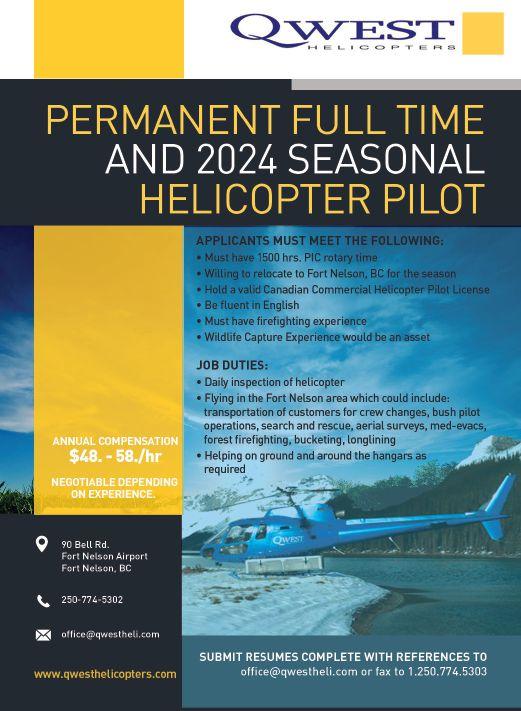


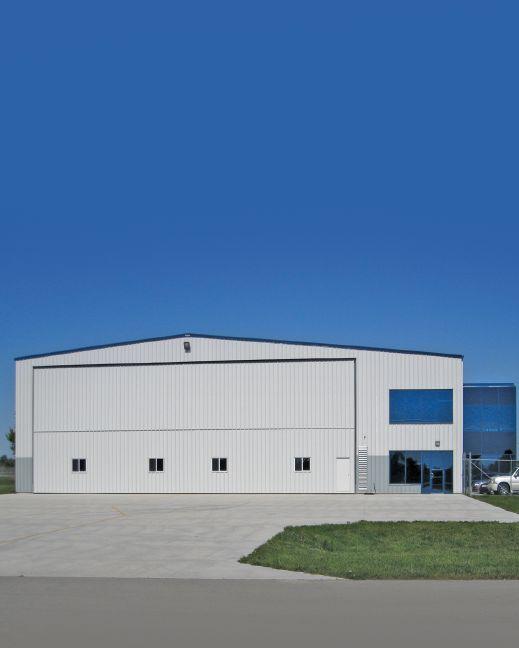



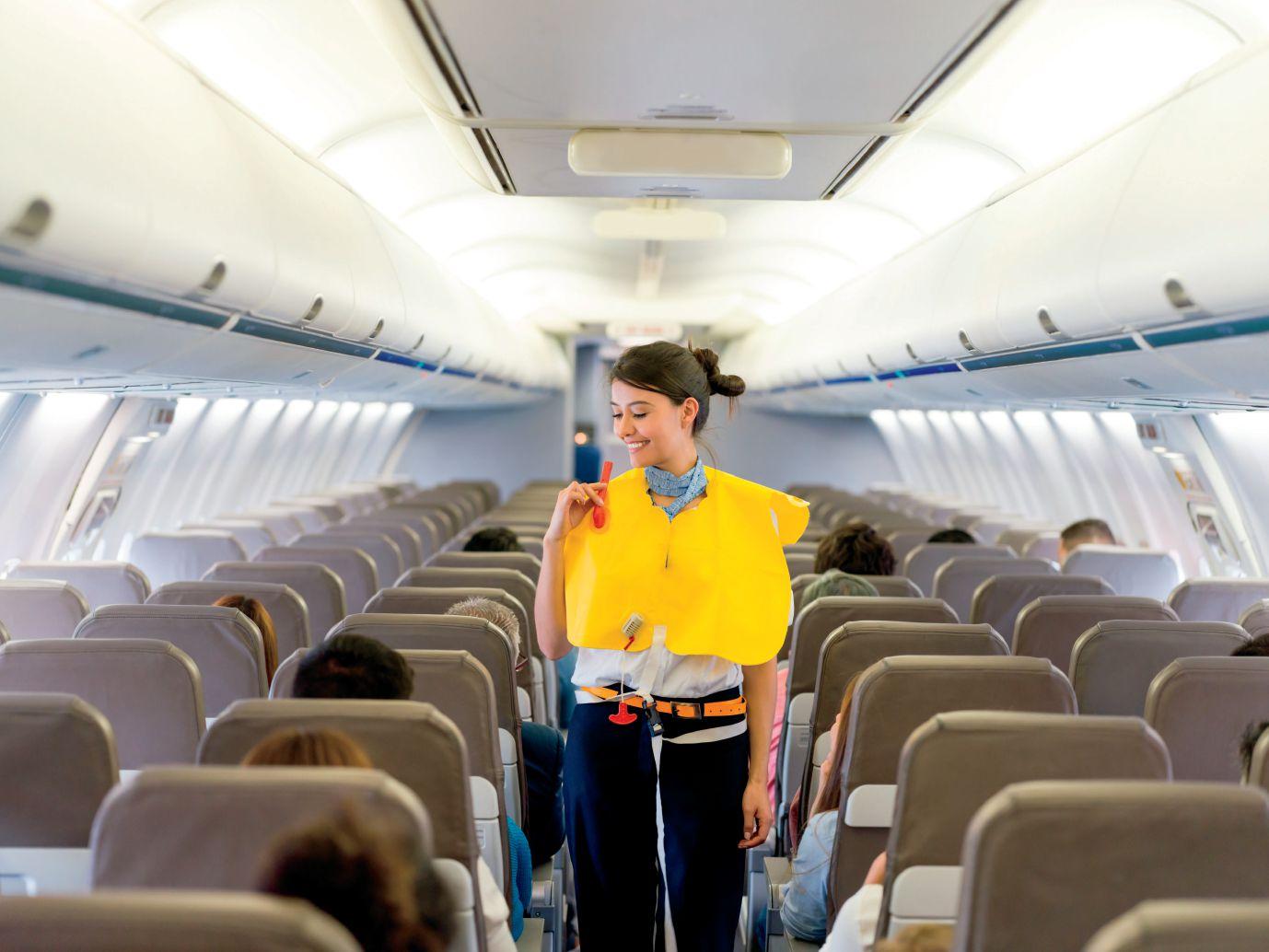

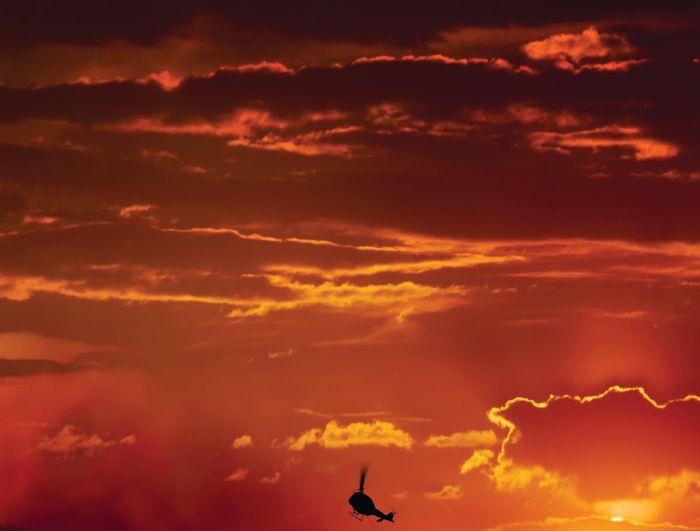

By Olusola Adewumi John
Nowadays, air travel is synonymous with some form of in-flight entertainment, encompassing everything from the reception offered by the aircrew to the food choices and digital content. These services all add value to flying for customers. Passengers are now so familiar with in-flight entertainment that to travel without it is unthinkable. The in-flight entertainment and connectivity market grew to US$5.9 billion as of 2019, a testament to its economic impact on both the airlines and the GDP of countries with airline carriers.
In-flight entertainment is so ubiquitous that, even if all other airline services were offered, the airline ensures a refund is made to the passenger affected if television content cannot be accessed. In-flight entertainment has evolved significantly over the years. Before in-flight entertainment media was introduced, passengers entertained themselves by reading books or with food and drink services.
The original aim of in-flight entertainment into cabins was to attract more customers, drawing inspiration from a variety of sources, including the theatrical and domestic media environments. It was not initially for the comfort and ease of travelling, as it is today.
In-flight entertainment began as an experiment in 1921, when 11 Aeromarine Airways passengers were shown the film Howdy Chicago! on a screen hung in the cabin during the flight. Four years later, another experiment was carried out in 1925 when 12 passengers on board an Imperial Airlines flight from London were shown the film The Lost World. It wasn’t until the 1960s that in-flight movies became mainstream for airlines. Trans World Airlines became the first carrier to regularly offer feature films during flights, using a unique film system developed by David Flexer, then-president of Inflight Motion Pictures. Starting in 1964, in-flight entertainment evolved to include various media types like 16-mm film, closed-circuit television, live television broadcasts and magnetic tape. In the 1970s, for example, airplanes might feature a large screen with a 16-mm projector in one part of the plane, while small screens

In-flight entertainment is now an economic platform for business, airlines and Hollywood.
hung overhead in another section.
Seatback screens were introduced in 1988 when Airvision installed 6.9-centimetre screens on the backs of airline seats for Northwest Airlines. They have since morphed into the larger screens we are familiar with today, which are found on nearly every airline. Most airlines nowadays have personal televisions for every passenger on long-haul flights. On-demand streaming and internet access are also now the norm. Despite initial concerns about speed and cost, in-flight services are becoming faster and more affordable.
In-flight entertainment now includes movies, music, radio talk shows, TV talk shows, documentaries, magazines, stand-up comedy, culinary shows, sports shows and kids’ shows. However, the rise of personal devices like tablets and smartphones could spell the end for seatback screens. A number of U.S. airlines, including American Airlines, United Airlines and Alaska Air, have removed seatback screens from their domestic planes. This decline is par for the course. To arrive at the complex system used by aircraft today, in-flight entertainment went through a number of different stages, as identified by aviation scholar D.A. Reed.
It started with an idea phase, which saw the conception of the idea, followed by an
arms race phase where most airlines adopted some form of it. Currently, airlines are facing challenges in the final – and current – phase of evolution, and are dealing with failures linked to business concept flaws or low revenue. Now that most air travellers carry electronic devices, fewer airlines are installing seatback screens. From an economic standpoint, this makes sense for airlines: Removing seatback screens improves fuel costs and allows airlines to install slimmer seats, allowing for more passengers.
At some point in the evolution of in-flight entertainment, it started to serve as more than just a form of entertainment or comfort. Now, it’s also a competitive tool for airline advertisements, and a form of cultural production. In-flight entertainment has become an economic platform for investors, business people, manufacturers and entertainment providers, especially Hollywood. It also plays a key role in promoting the national culture of destination countries. However, the evolution of in-flight entertainment hasn’t been without its challenges. As a form of cultural production, it often reflects the interests of advertisers, governments and business entities. It also follows that certain ideas, products and cultures are sold to passengers via in-flight entertainment.
The lucrative practice of capturing and selling passengers’ attention to advertisers was not limited to screens, either. In-flight magazines have always been packed with advertisements and, by the late 1980s, these ads spread to napkins and audio channels. Despite its shortcomings and precarious future, in-flight entertainment still offers passengers a sense of comfort, alleviating concerns about being suspended 30,000 feet above sea level. | W
This article was originally published on The Conversation. Solo John is a Visiting Researcher, Centre for Socially Engaged Theatre, at the University of Regina.
Tip-To-Tail services dedicated to keep you flying

As an industry leader, StandardAero is partnered with approved OEMs worldwide allowing us to go through the helicopters entire life-cycle from airframe assembly, upgrades, custom solutions, design and certifications, all the way through to the sun-setting of your programs.
• Airbus
H125/AS350, AS355, H130/EC130, SA341, SA342
• Boeing CH-47 all models AVIONICS
• StableLight 4-Axis AutoPilot
• ADS-B
• Glass cockpit
DESIGN SERVICES
• Full FAA and EASA approved design and modification services
• Airbus
H120/EC120, H125/AS350 including Airbus approved Full “D” level structural repairs, AS355, EC135, H130/EC130, H215/AS332
• Bell
B204/205, B206, B222/230/430, UH-1 series
• Boeing CH-47 all models
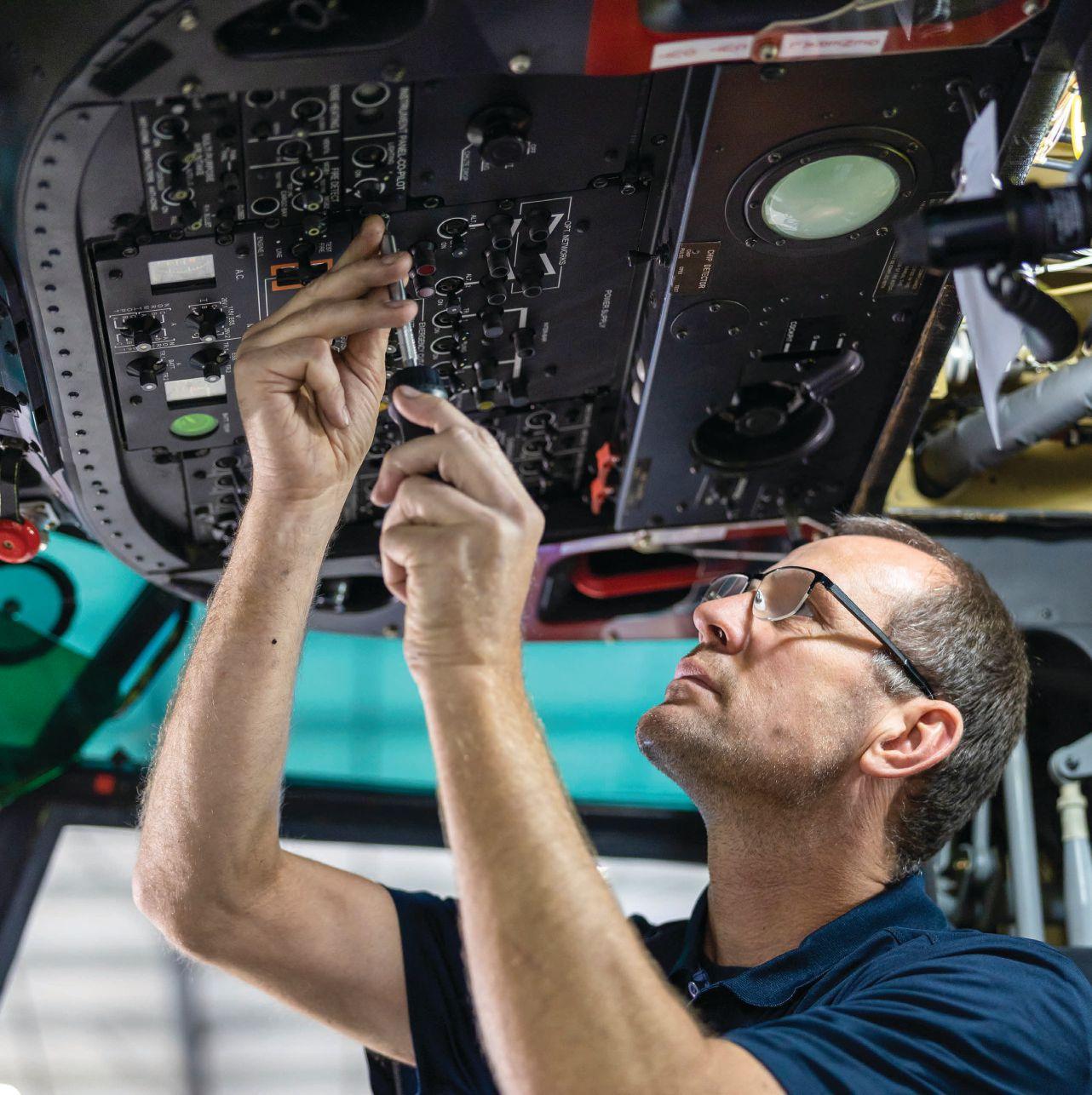
VISIT US AT THE HAI HELI EXPO FEBRUARY 27-29, BOOTH #1922
